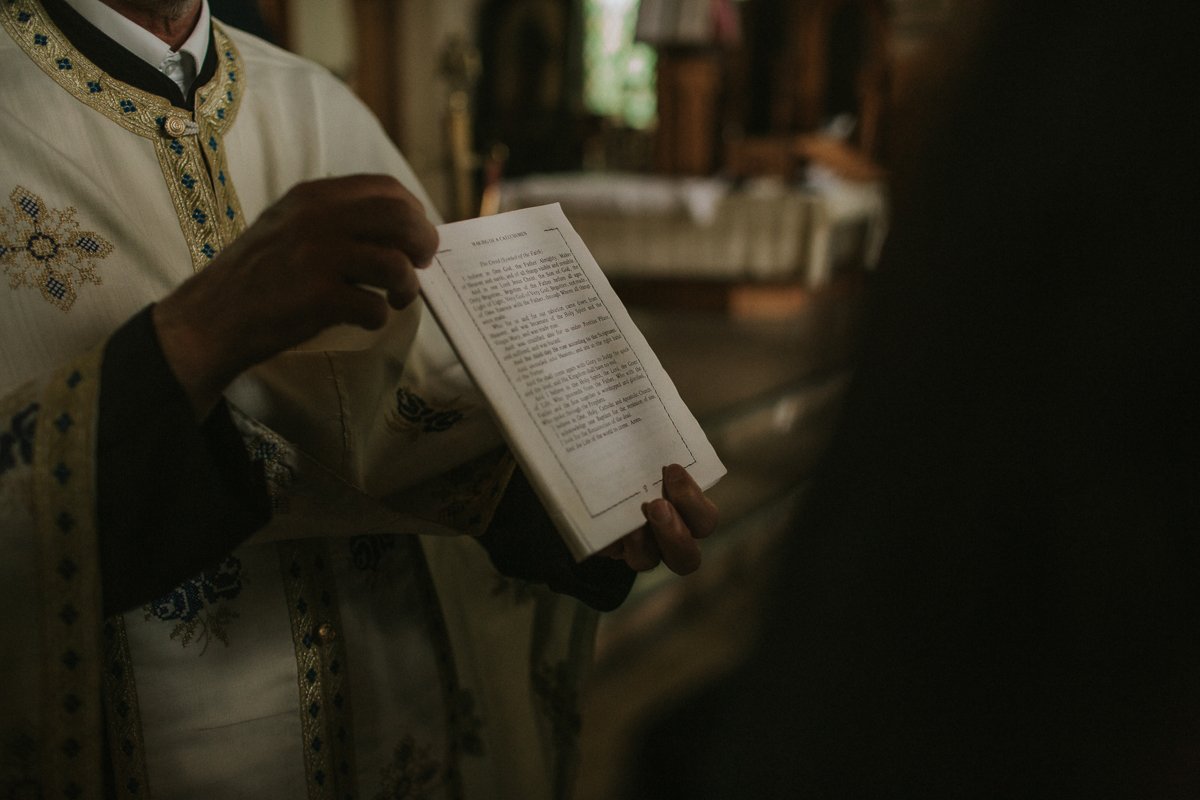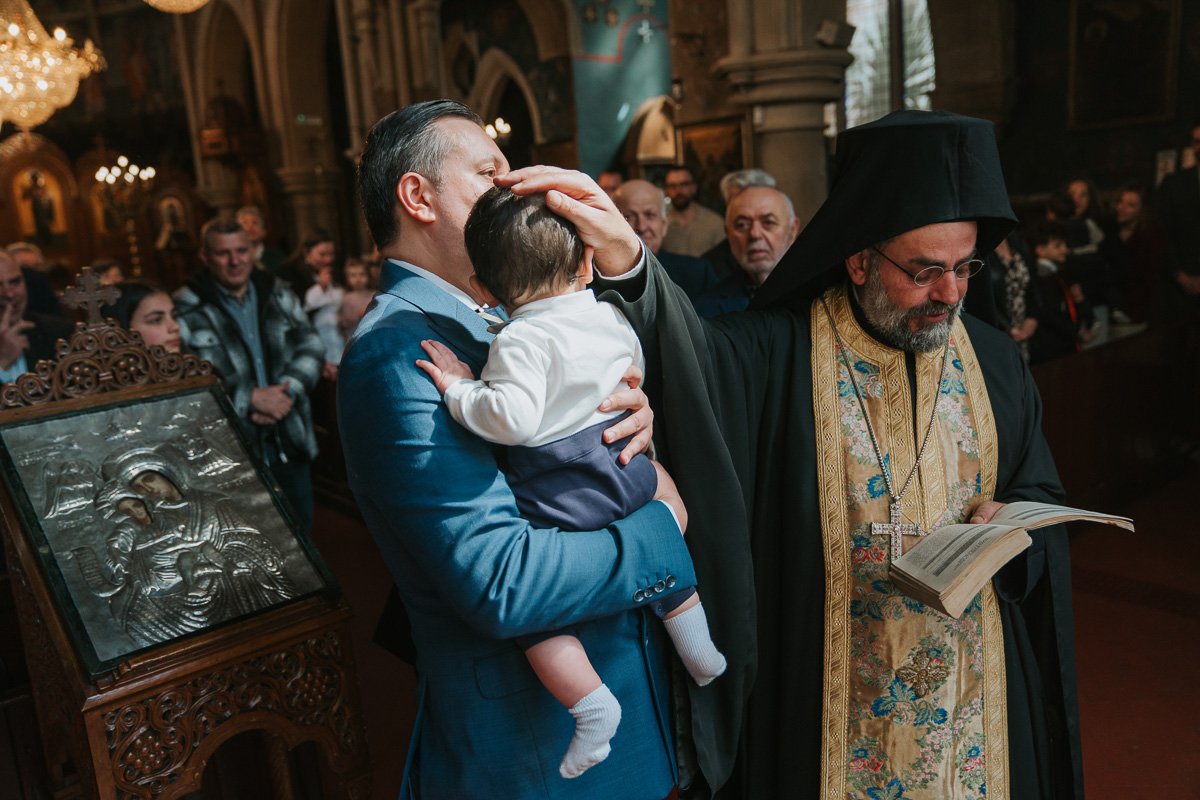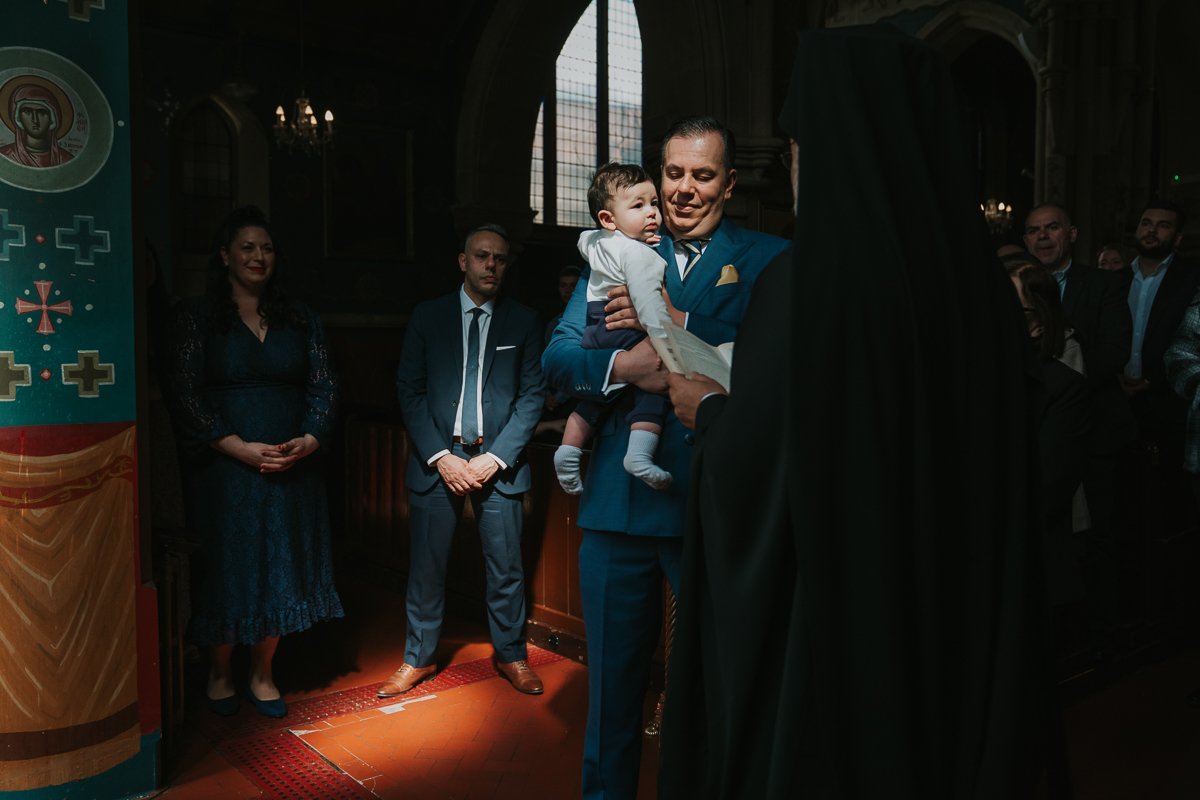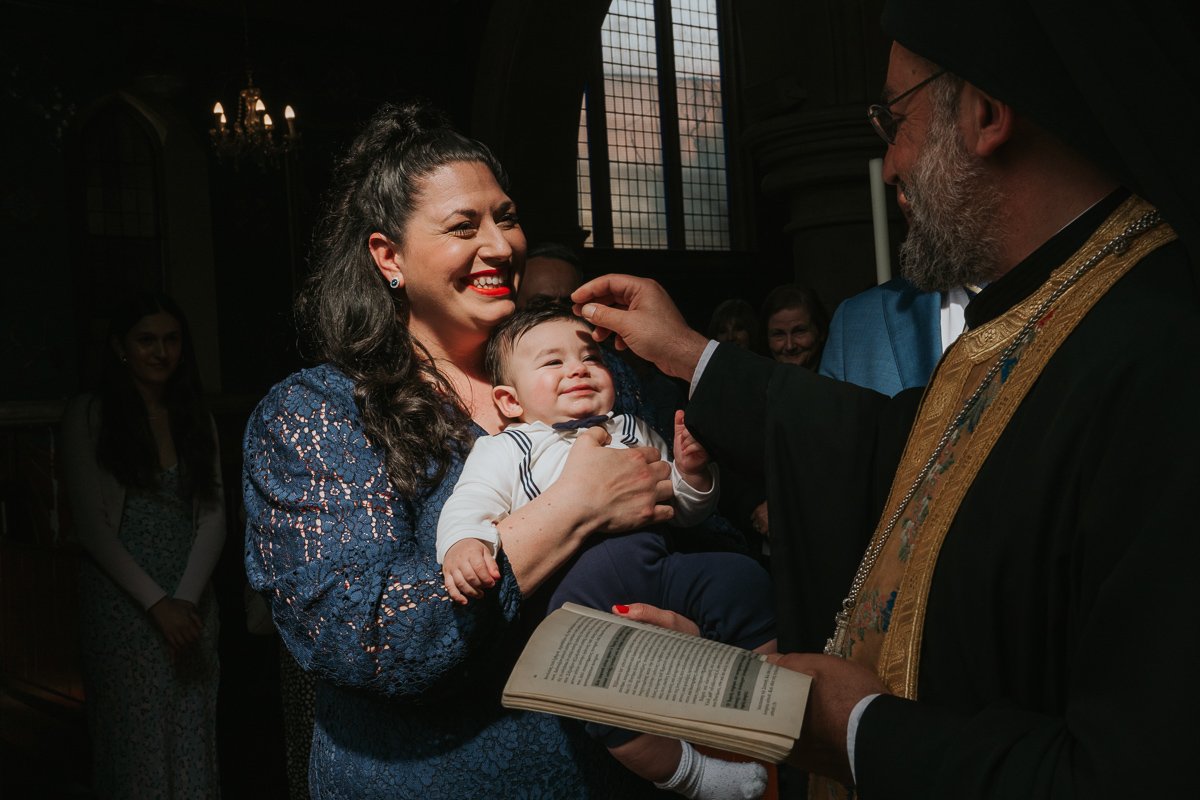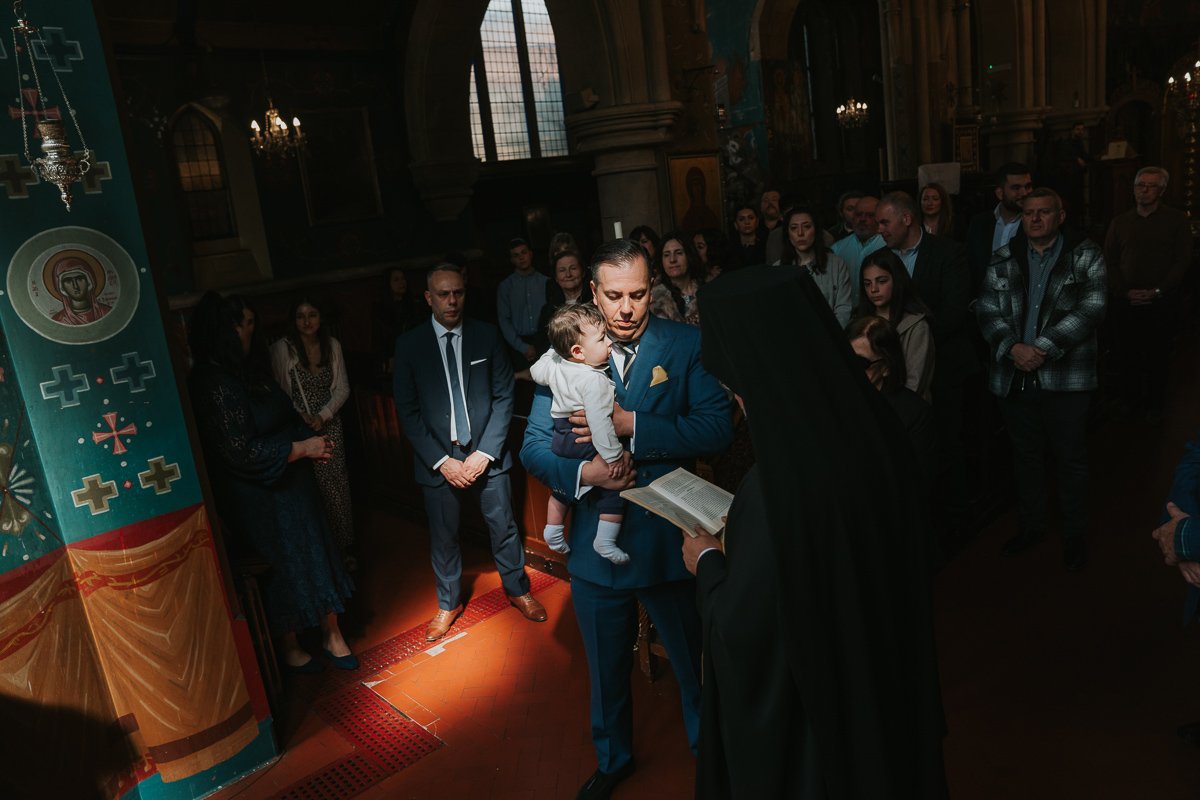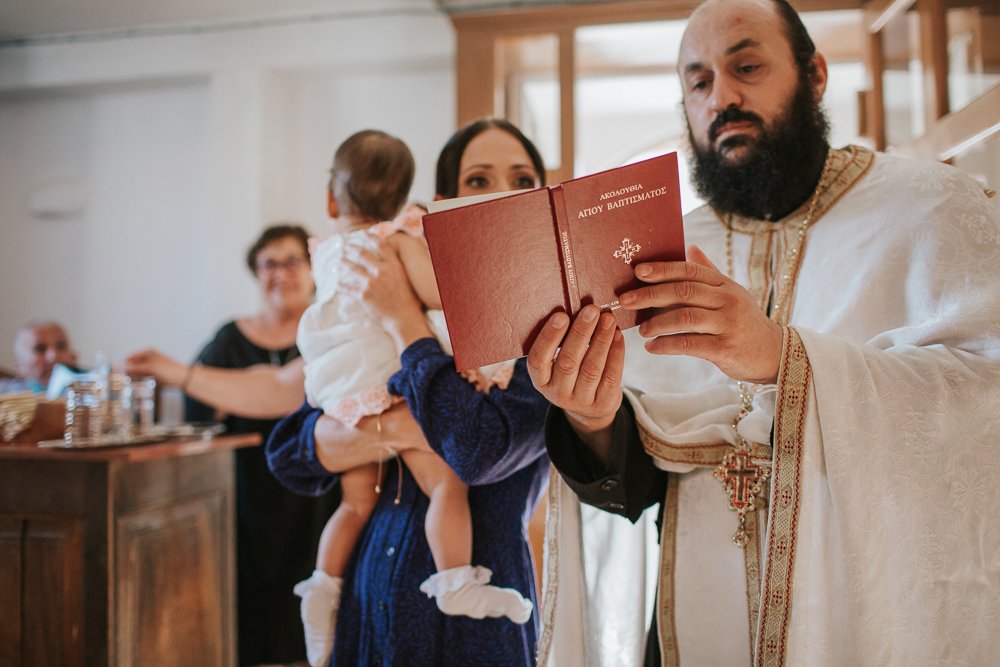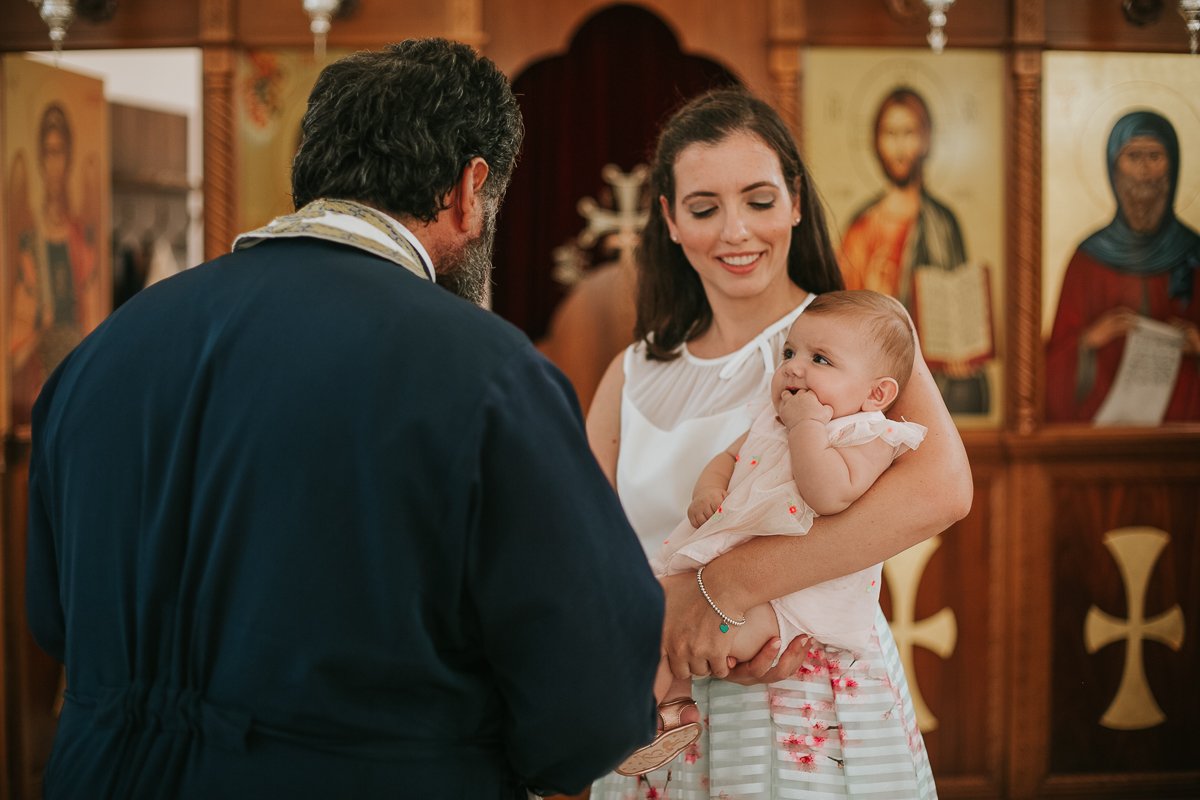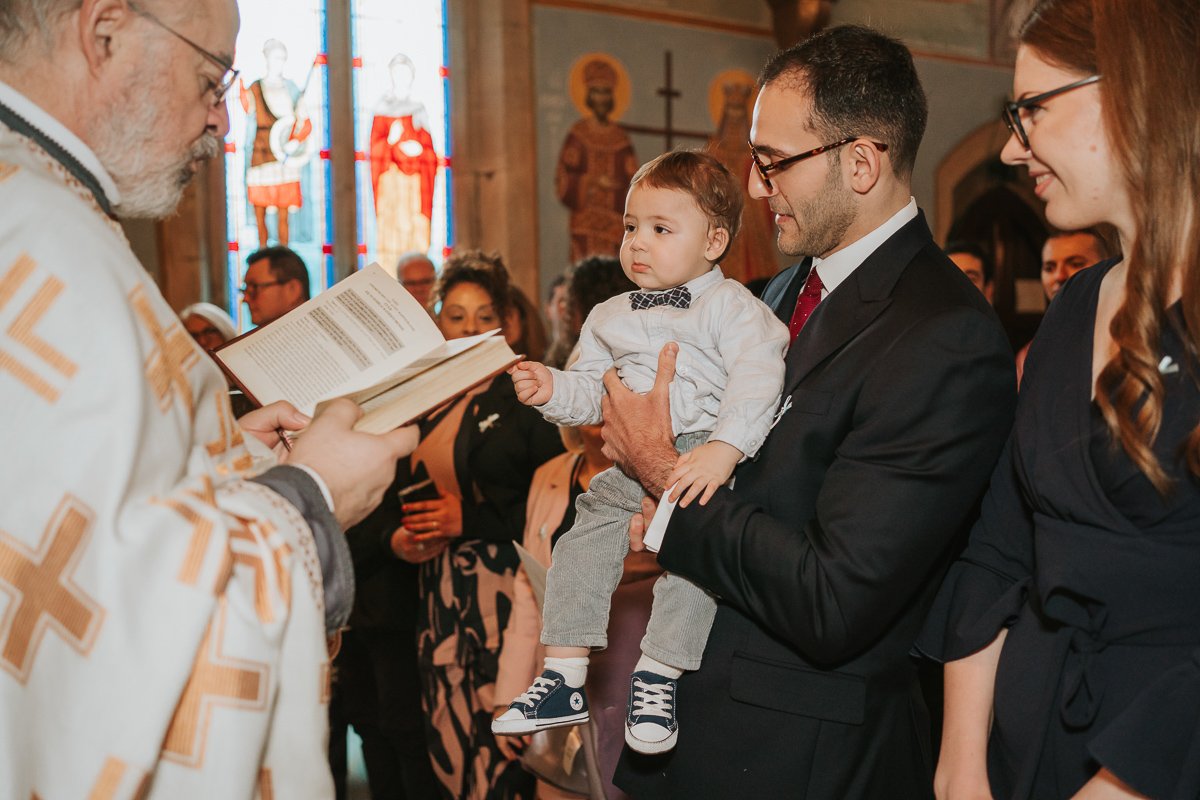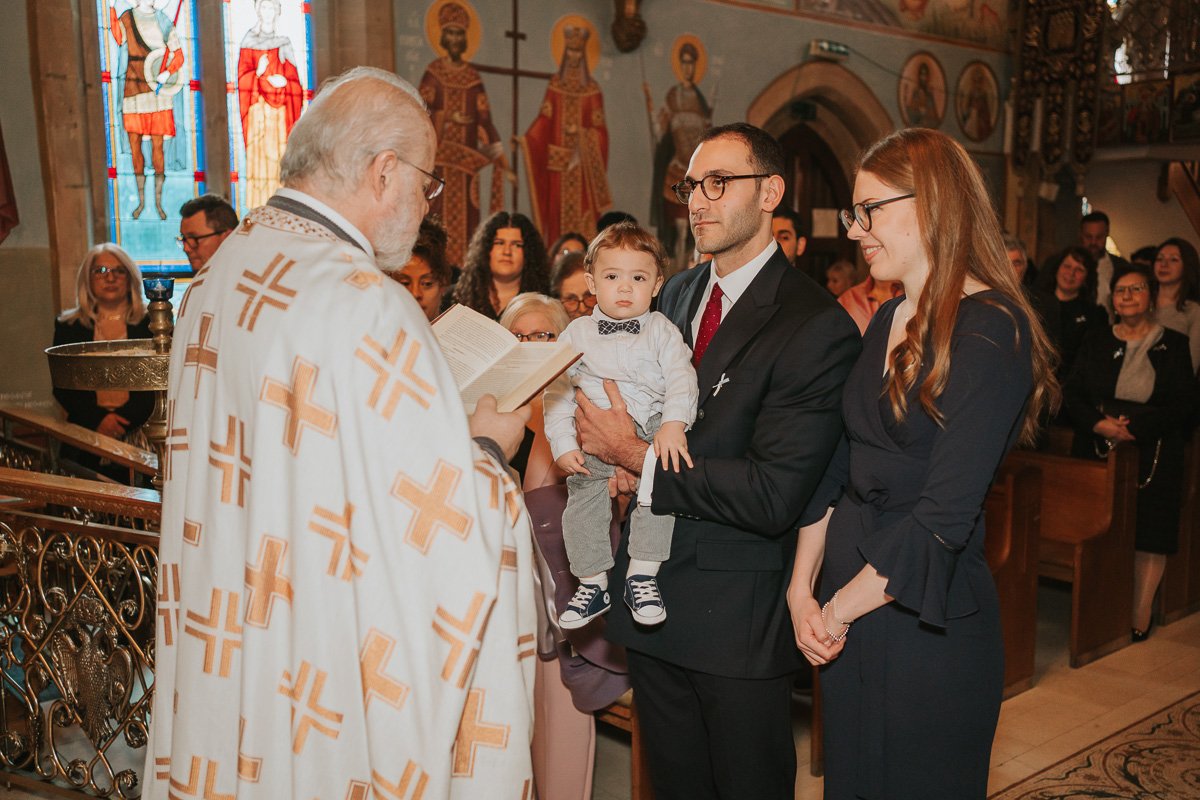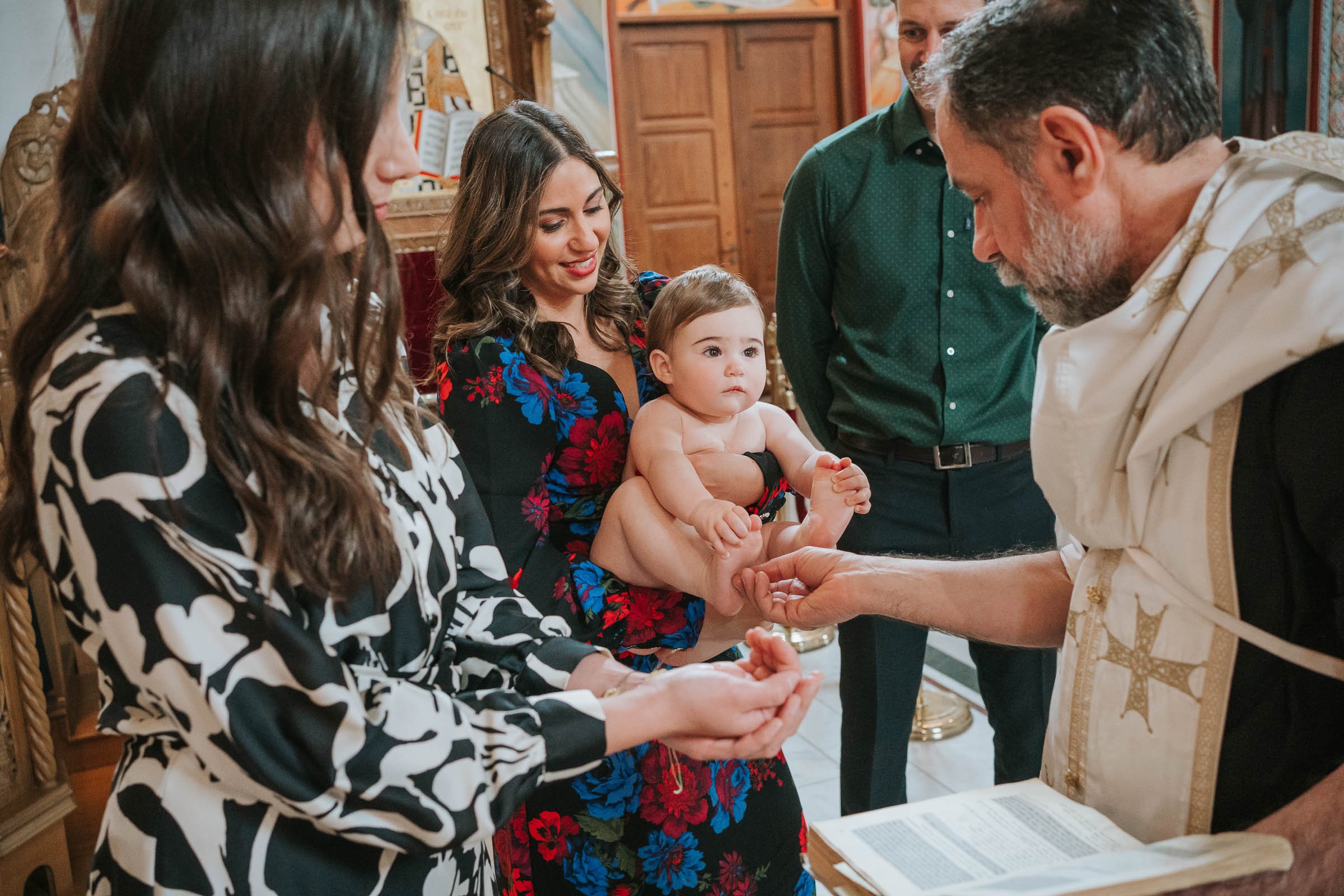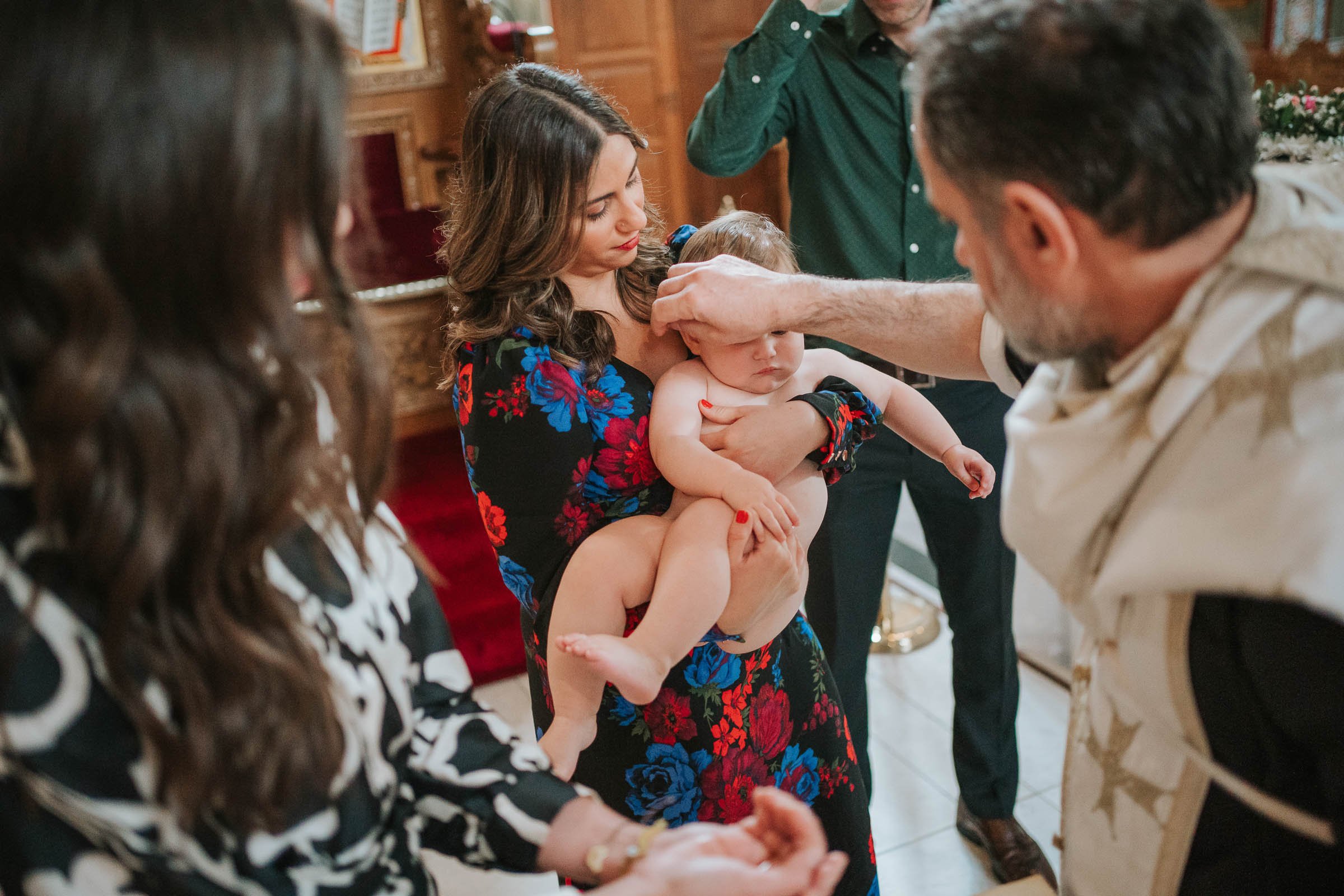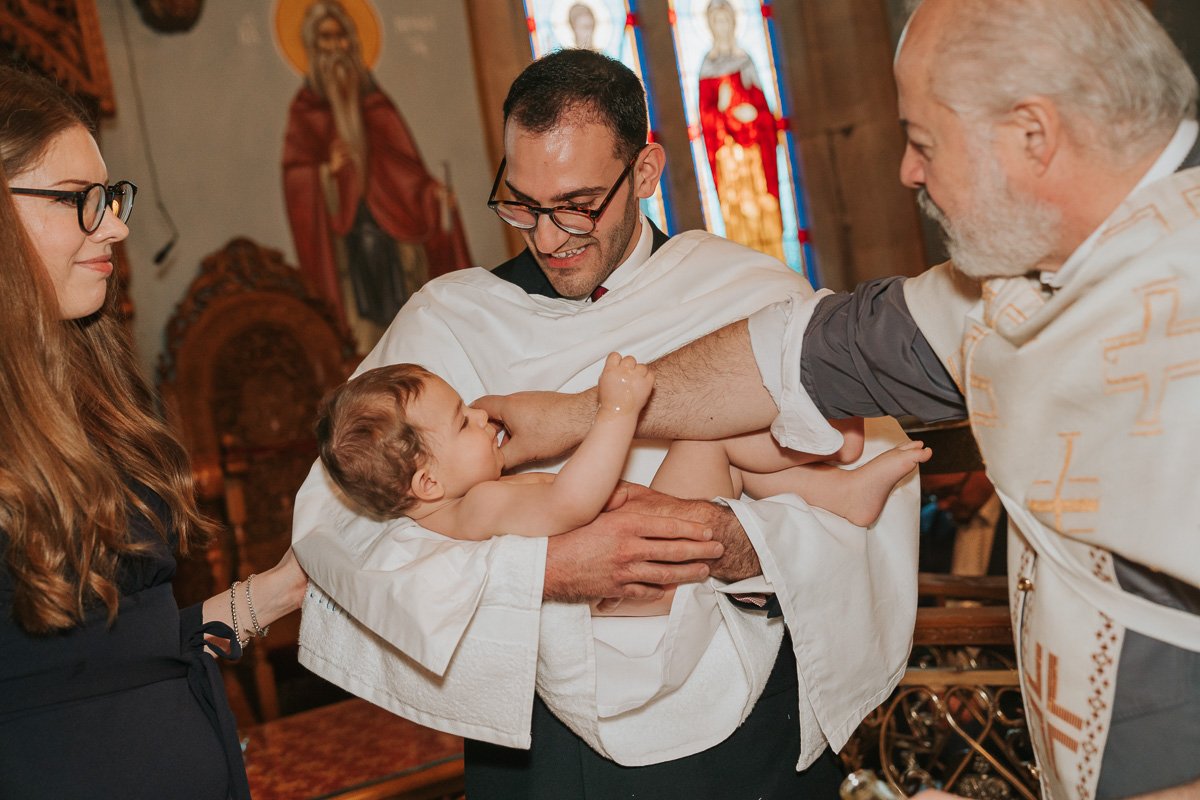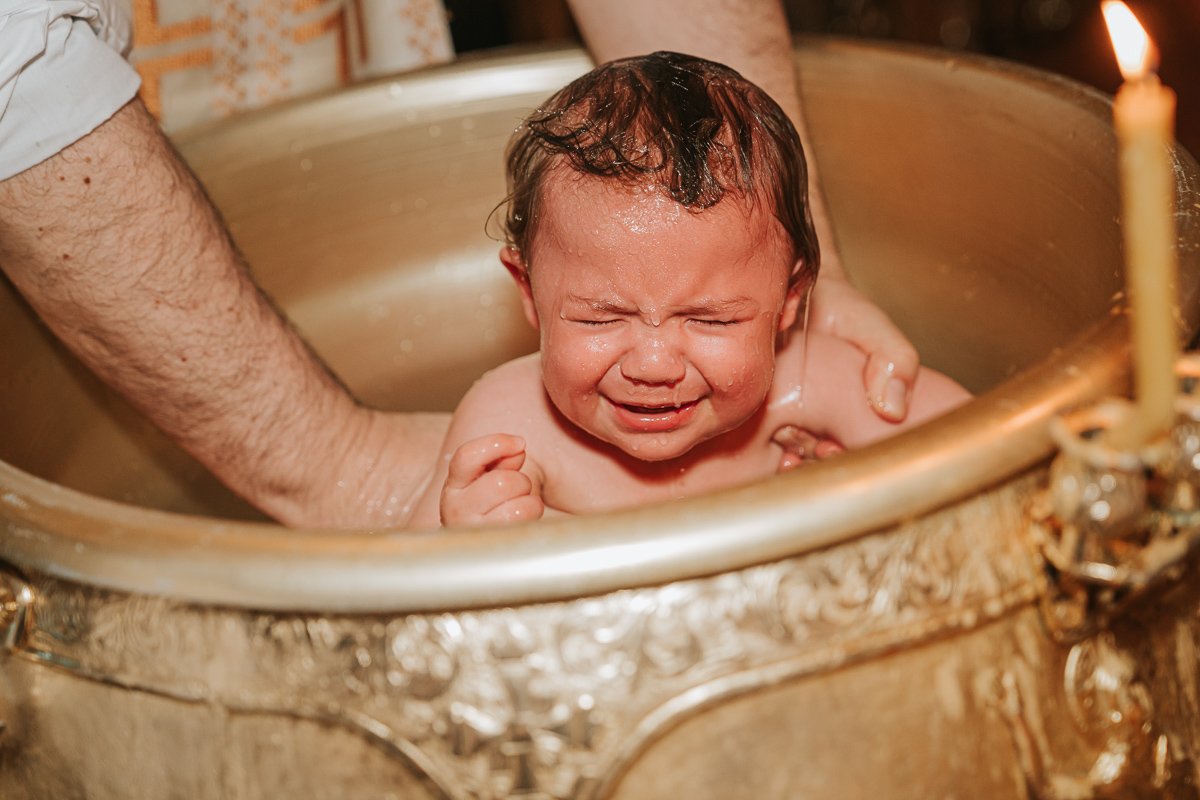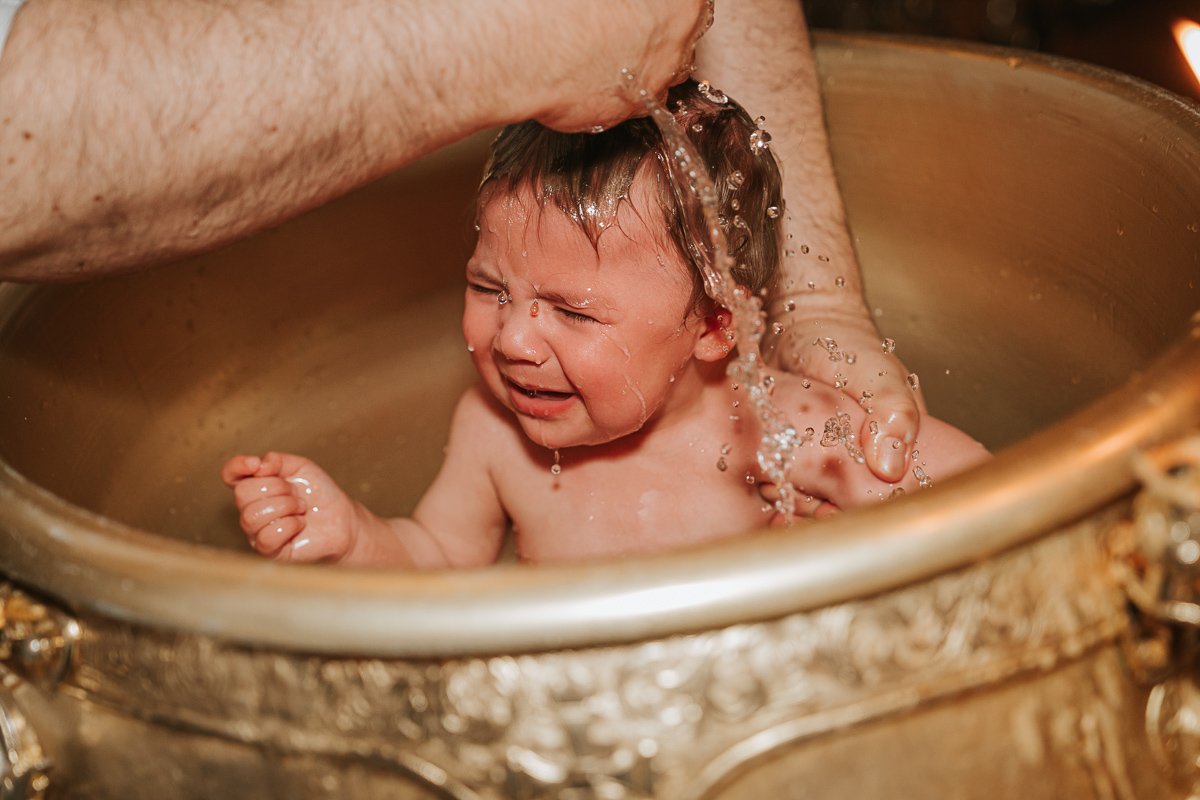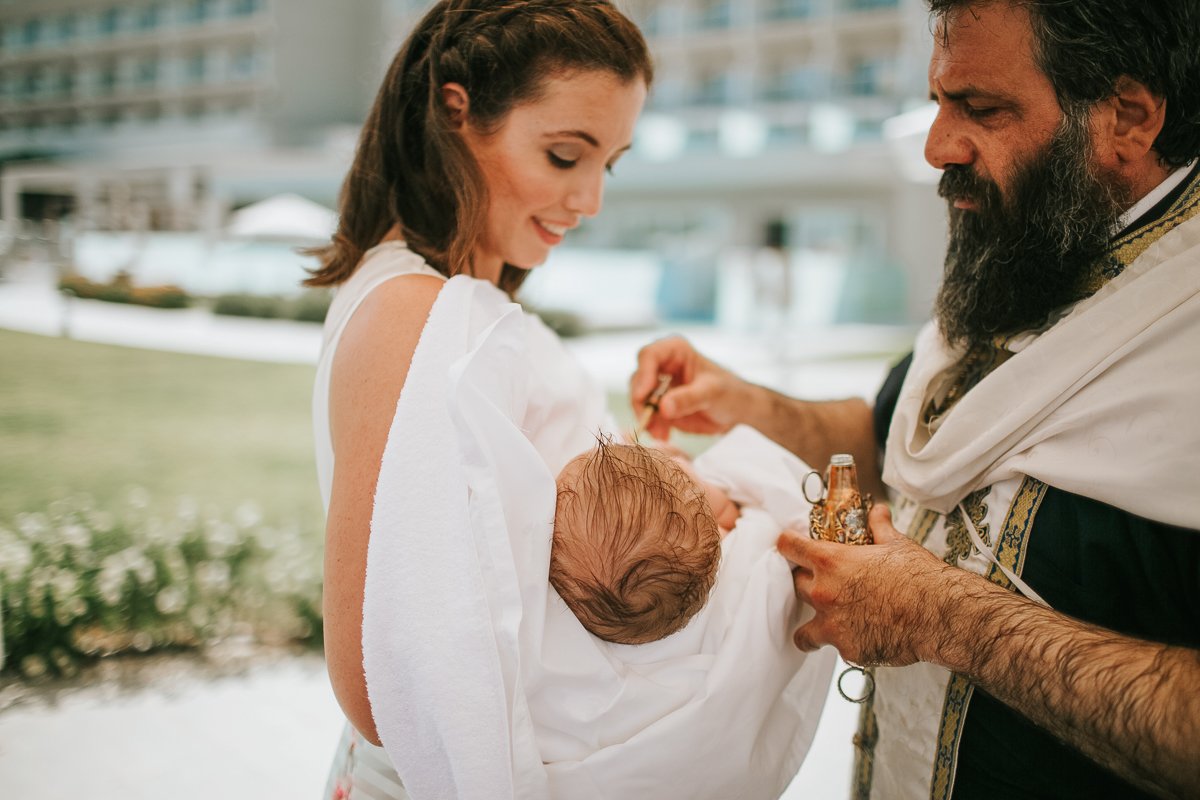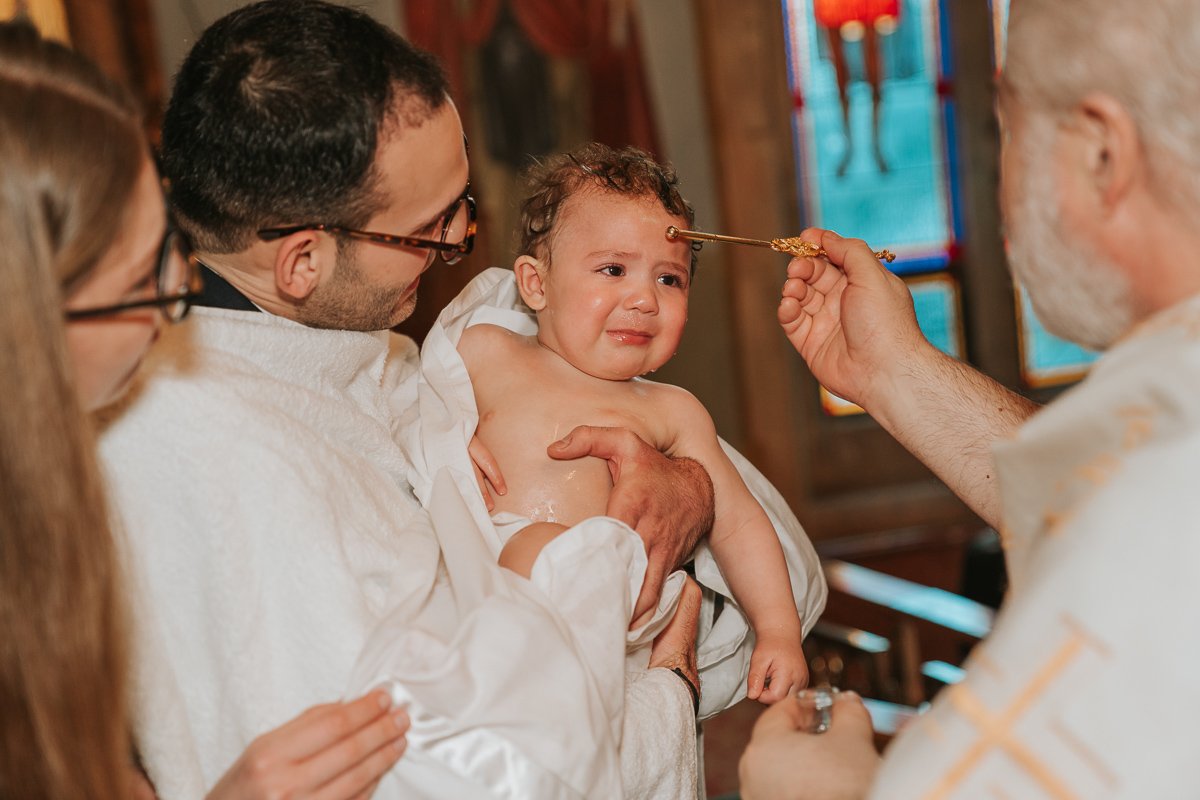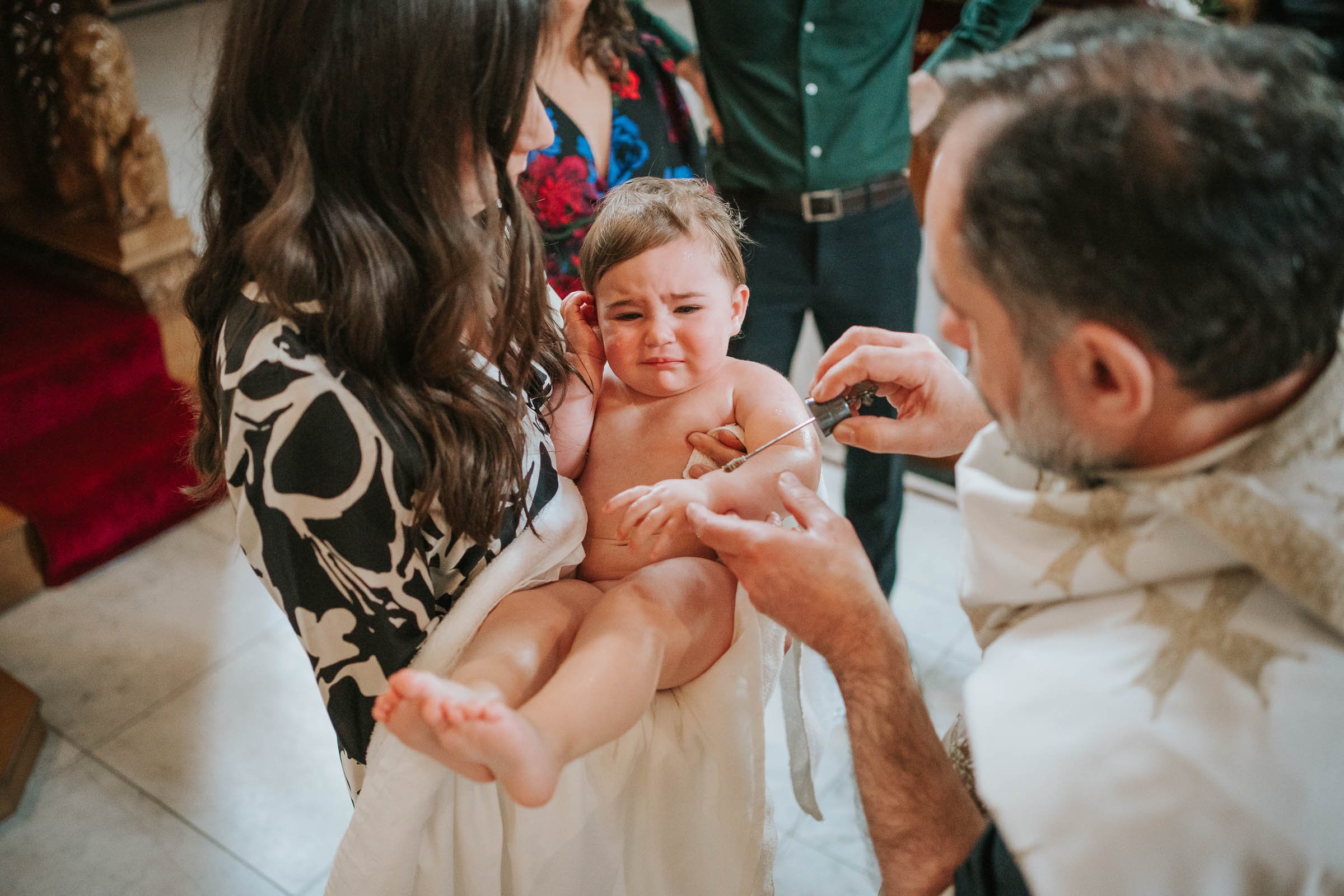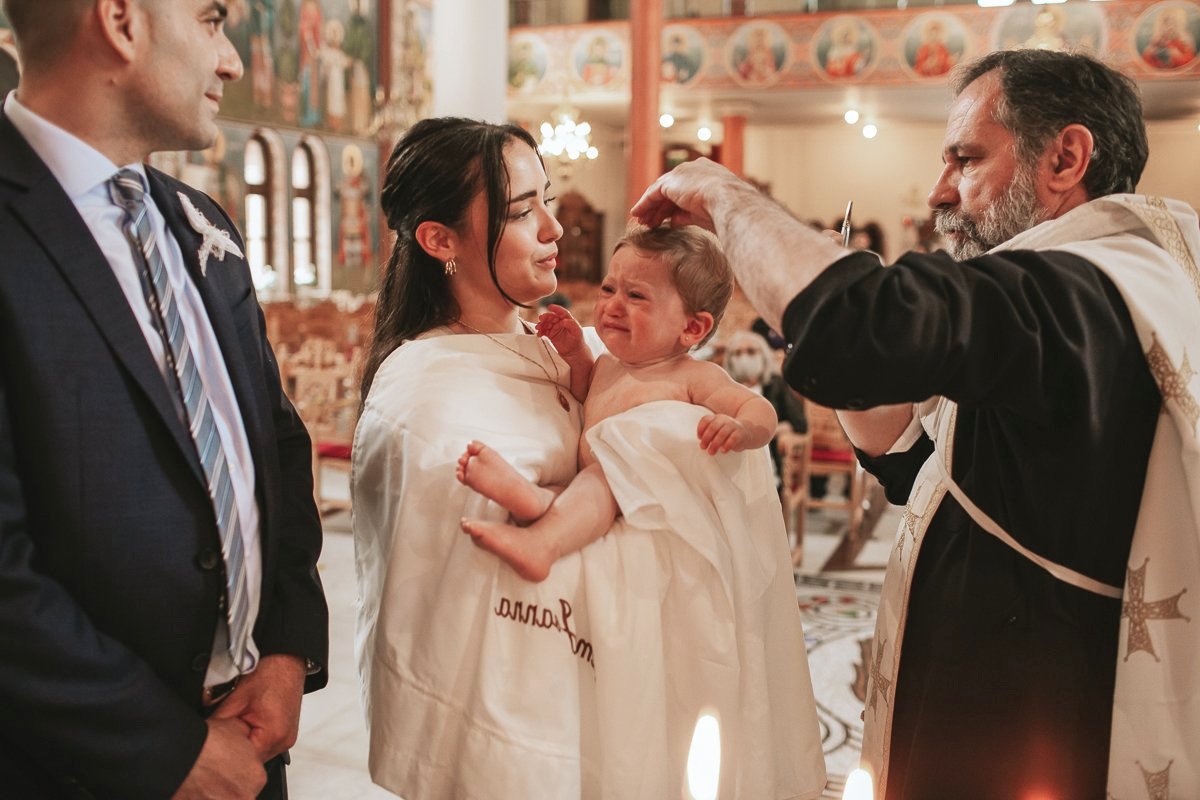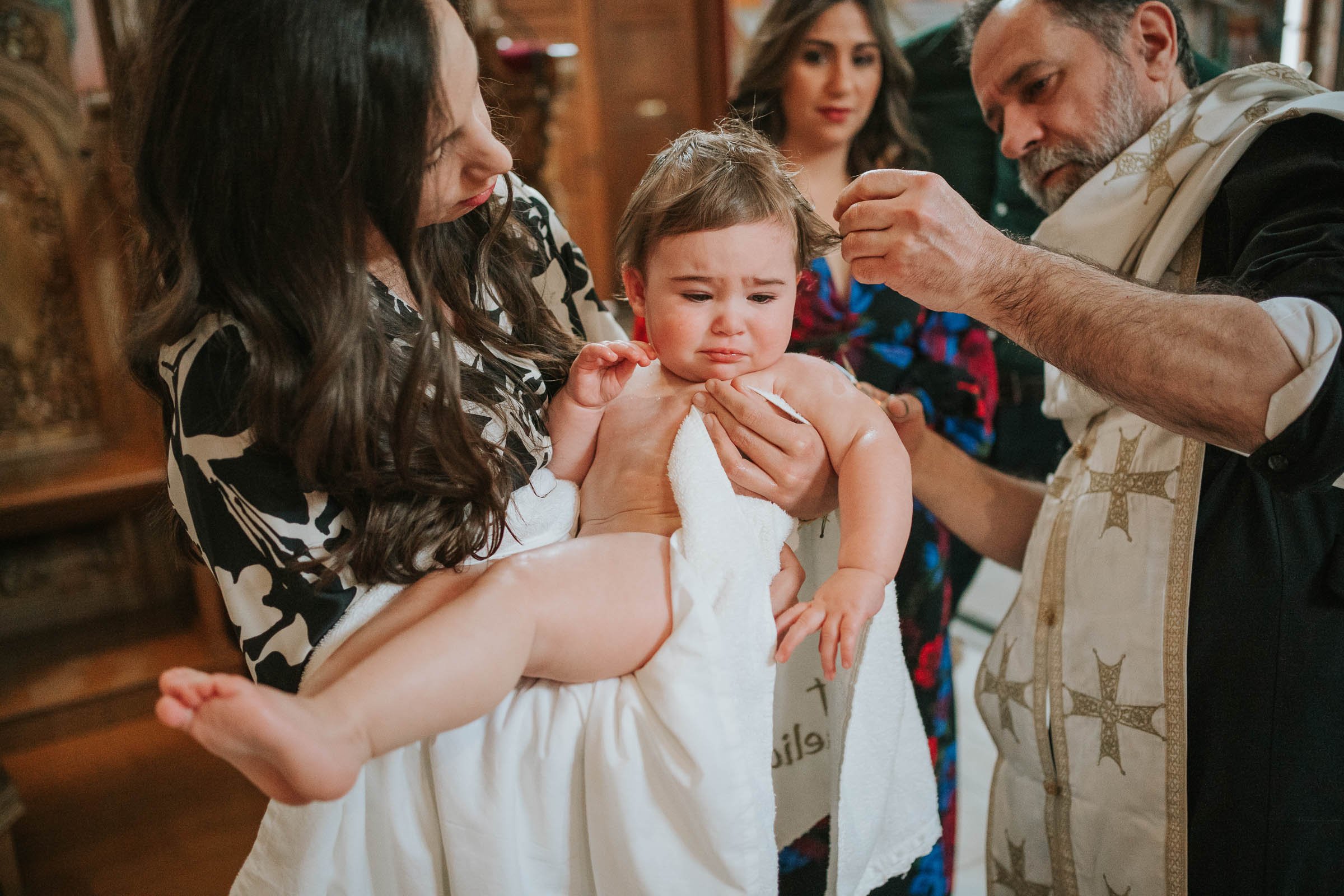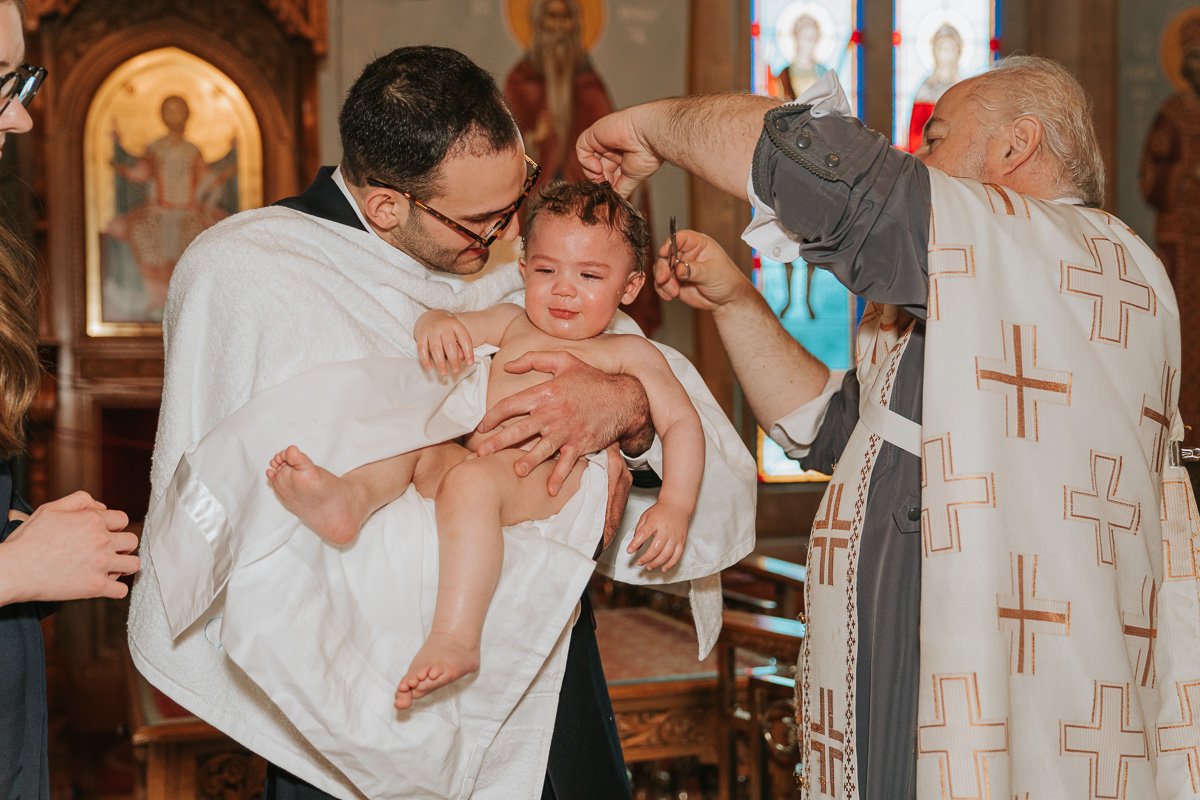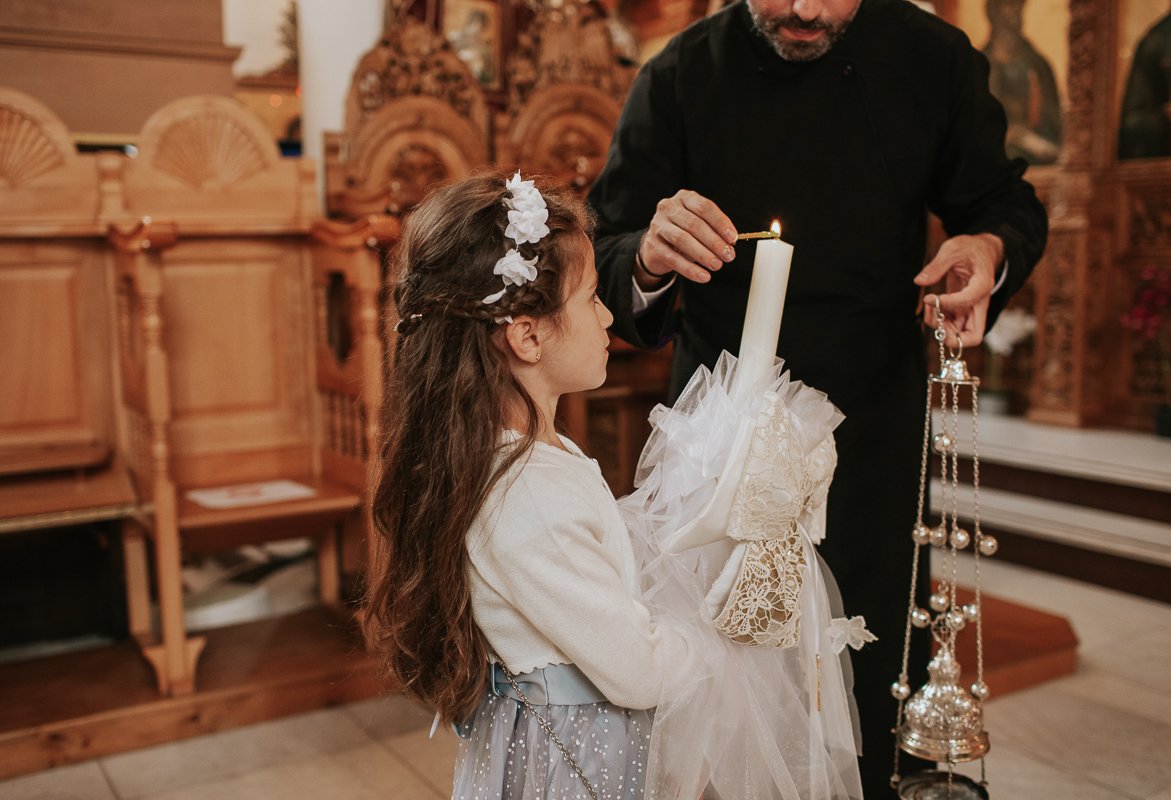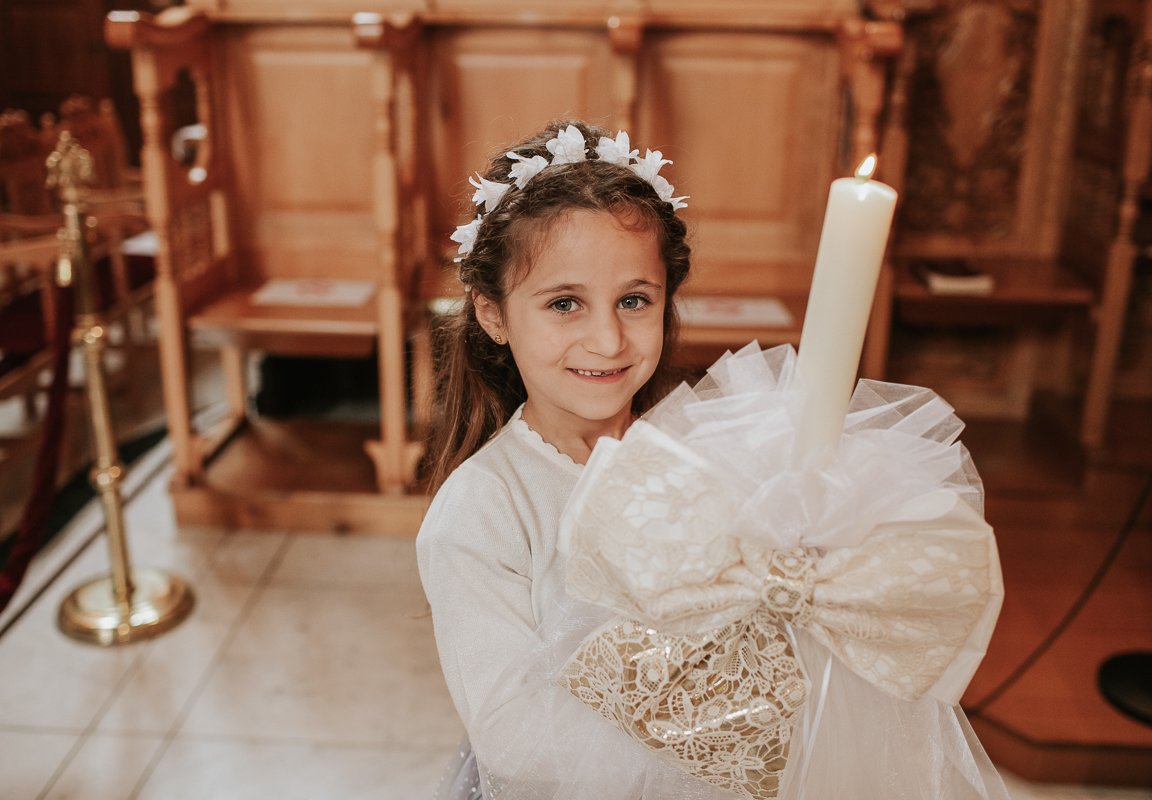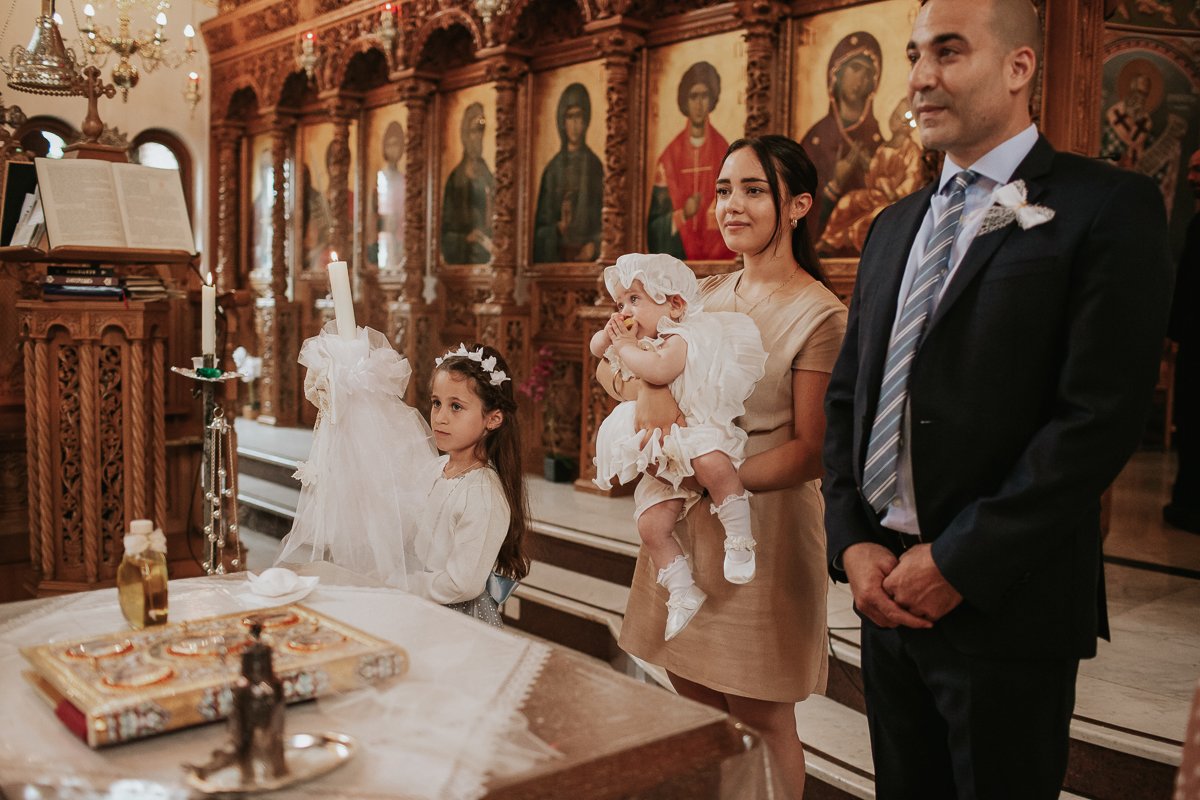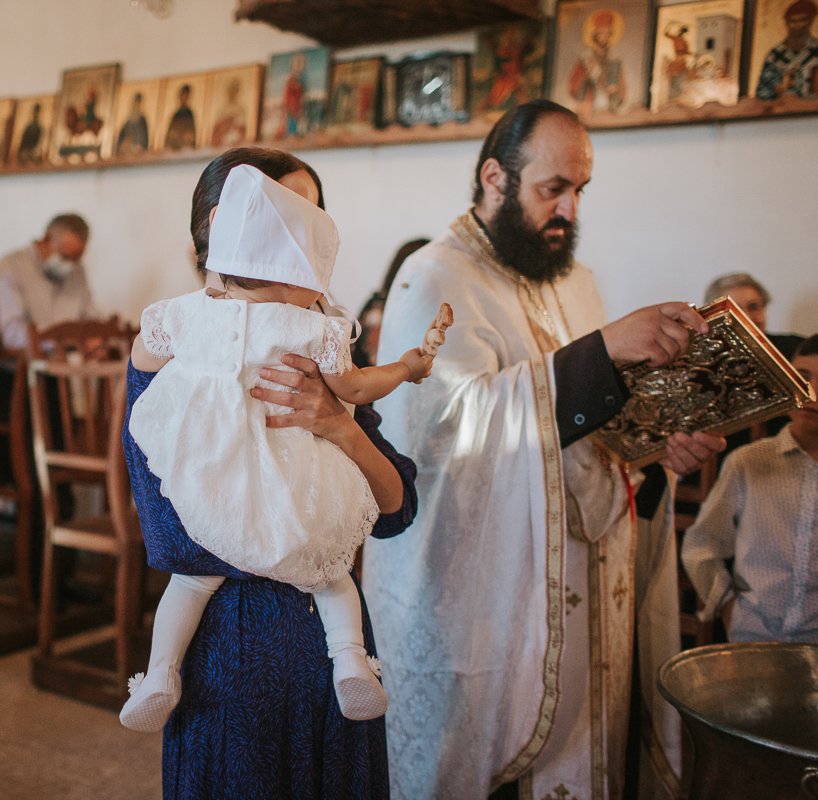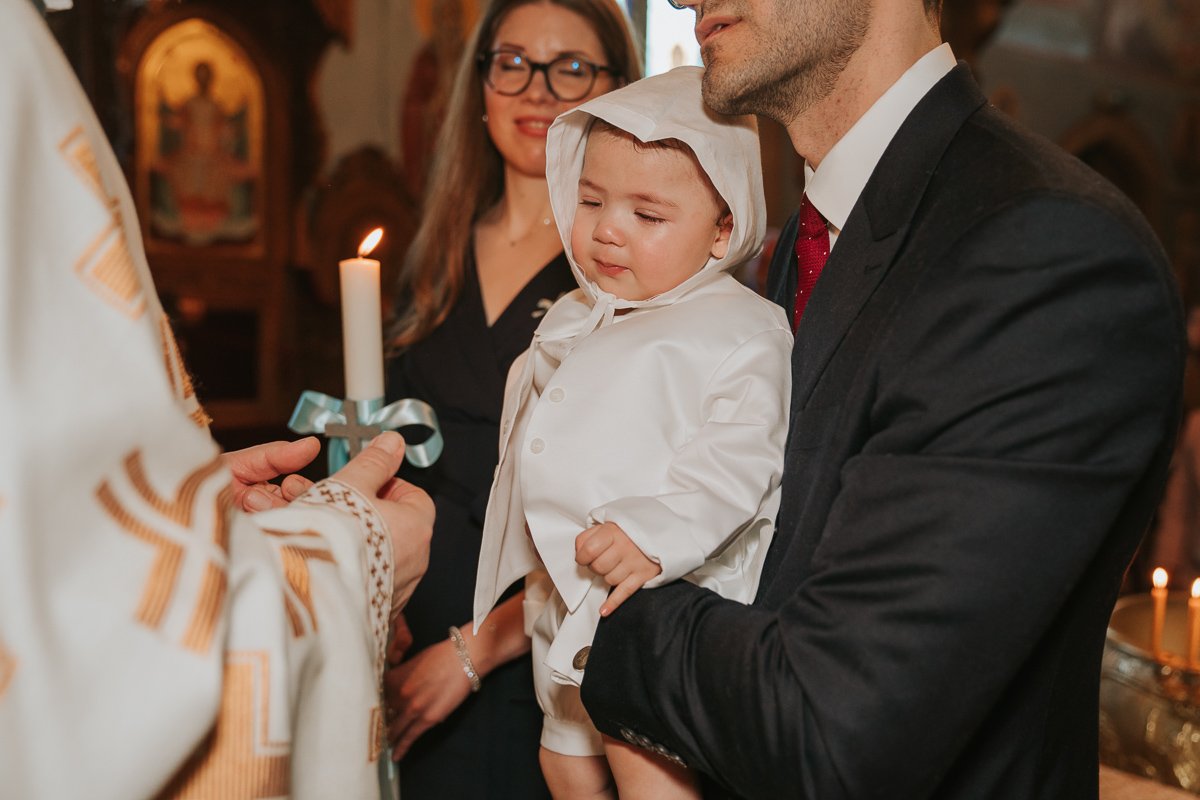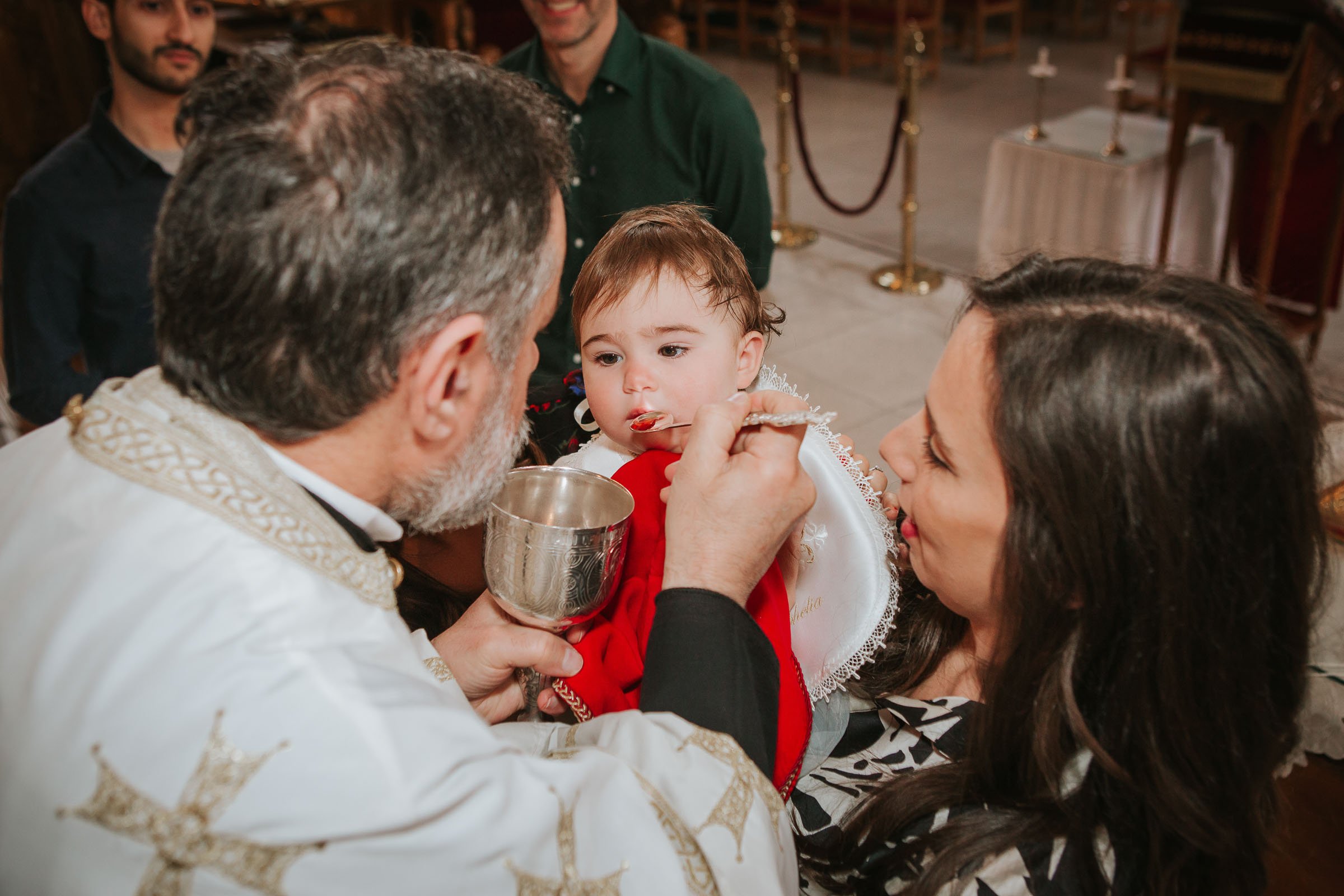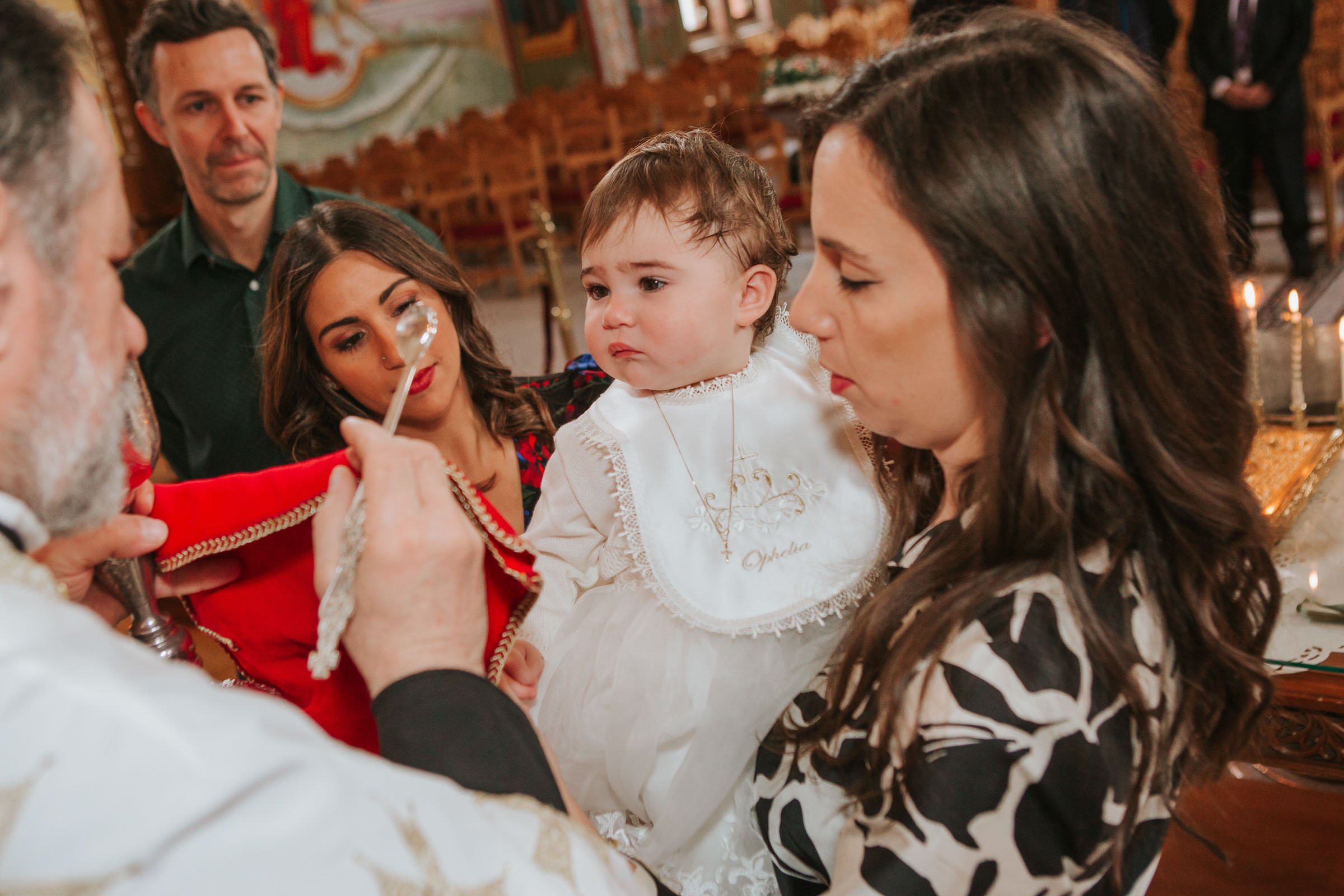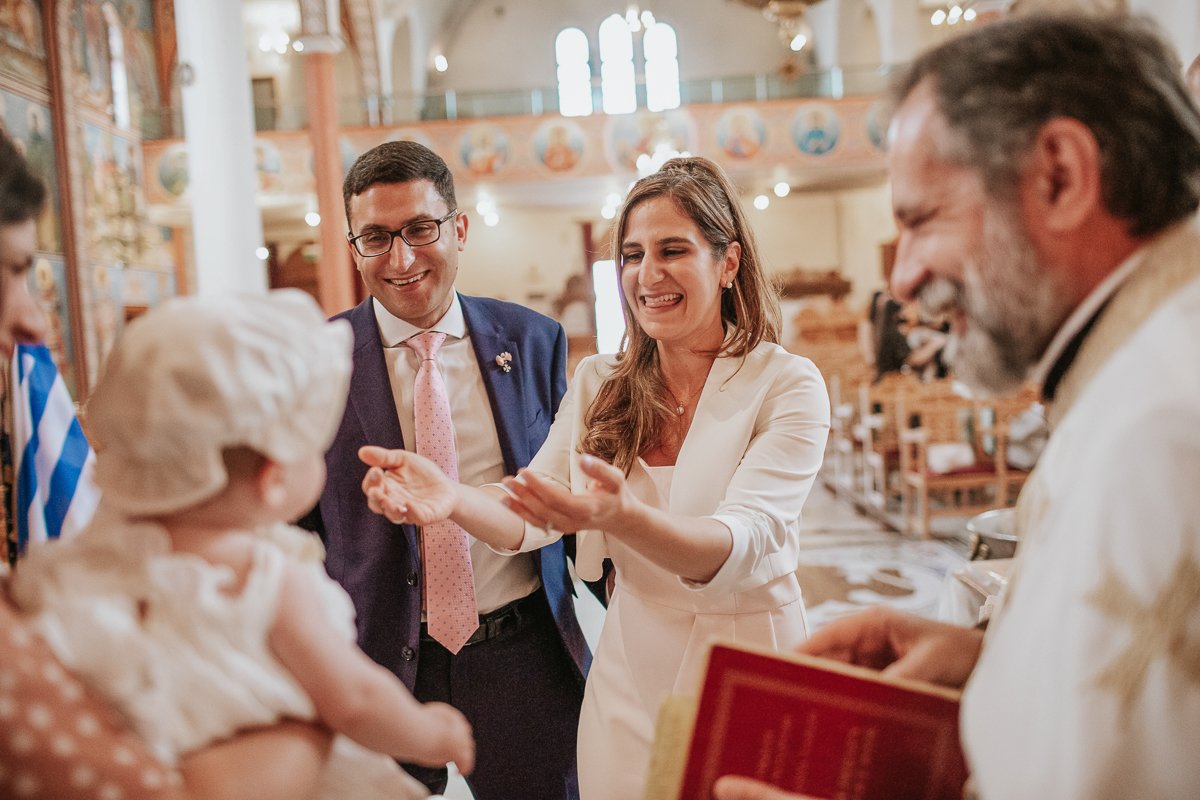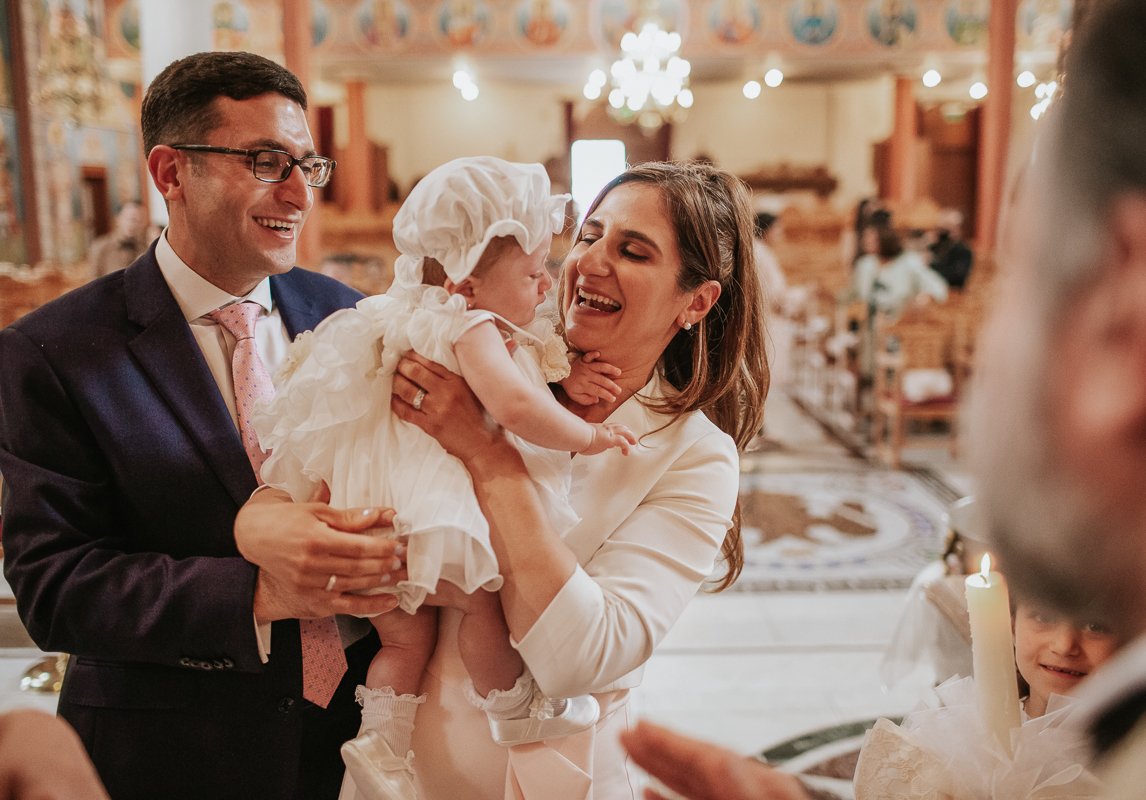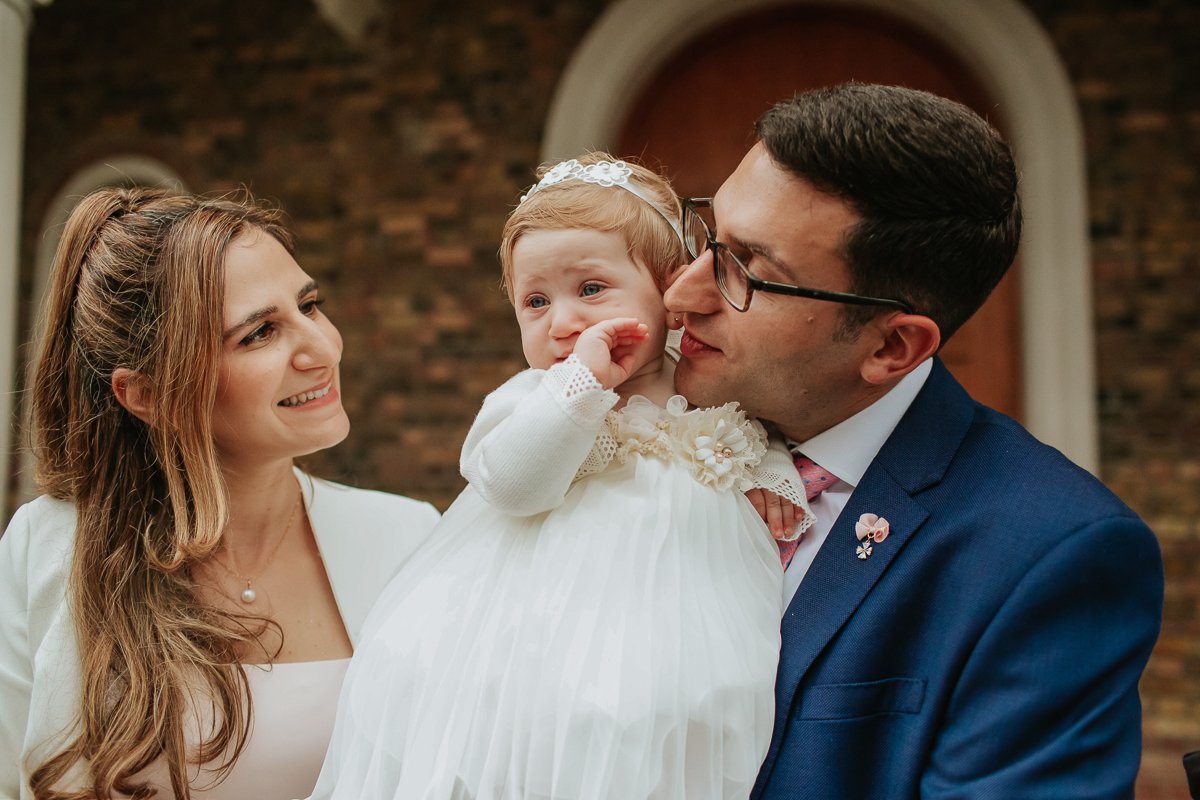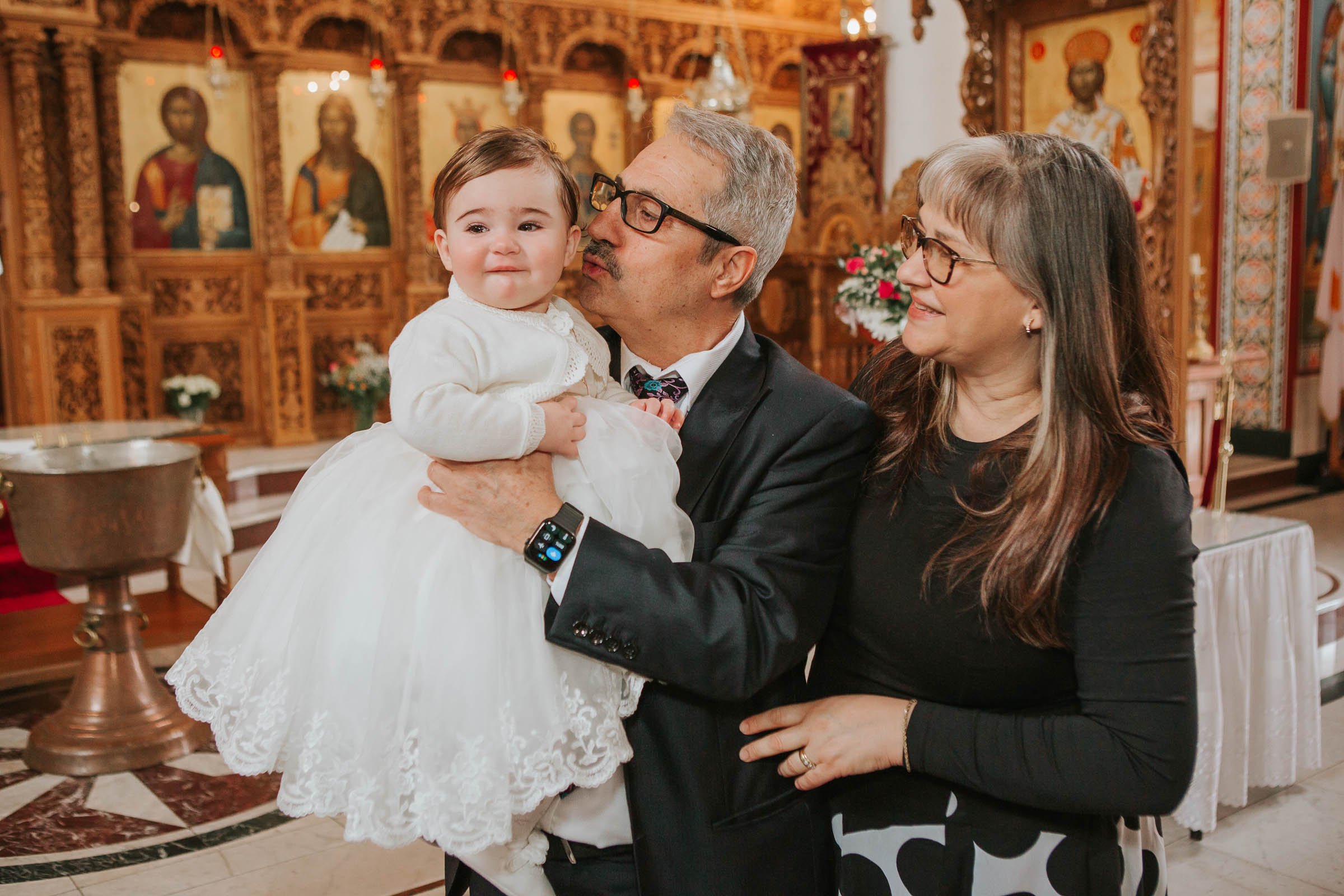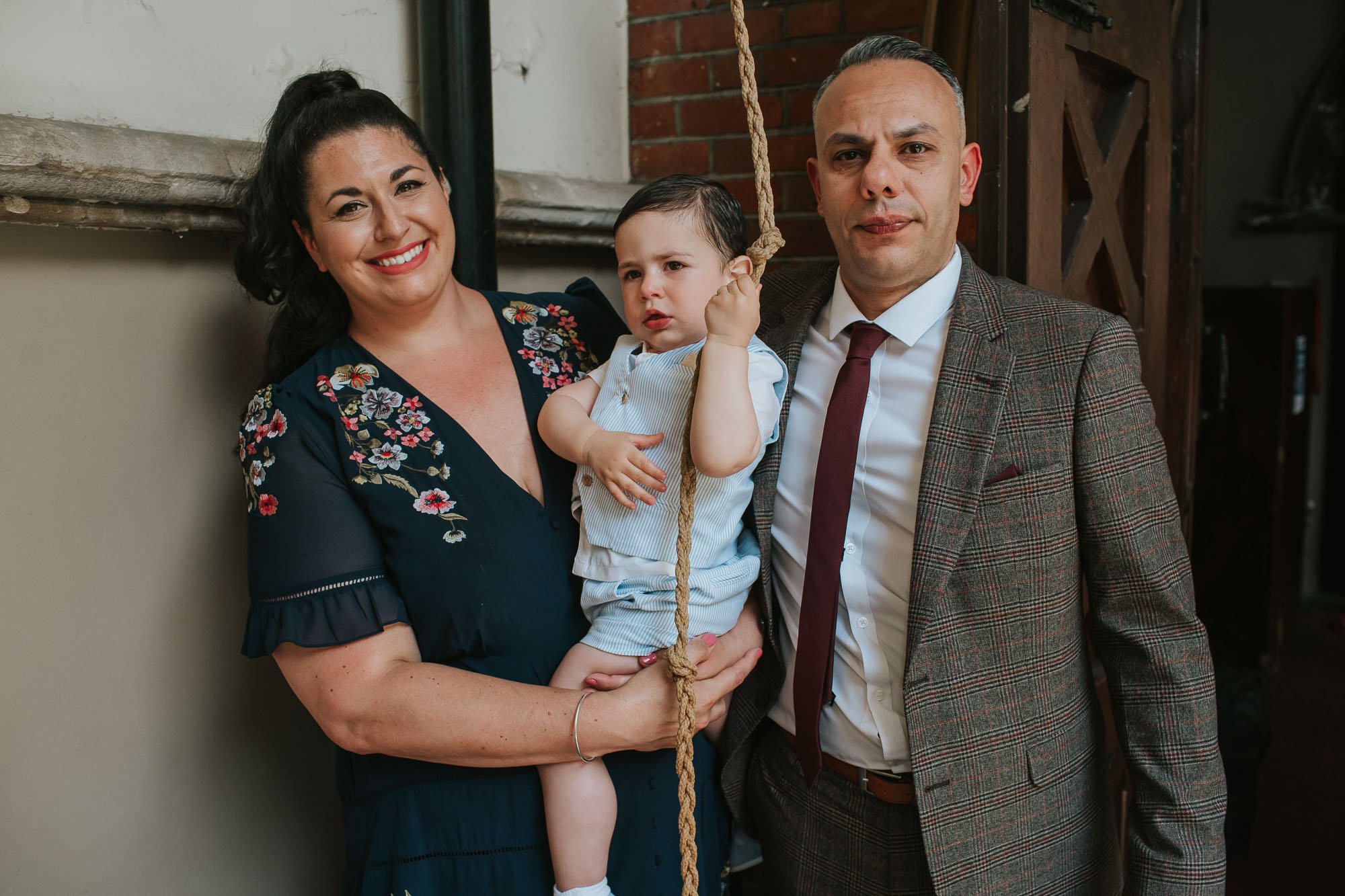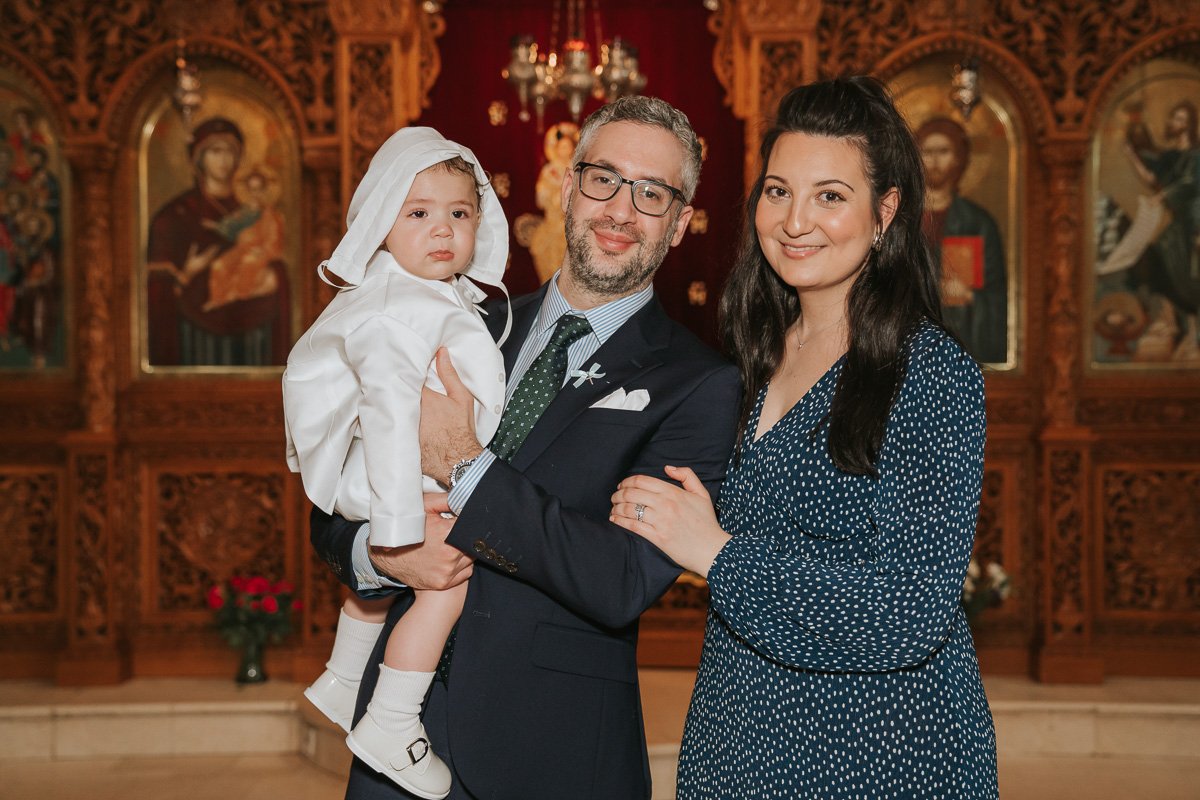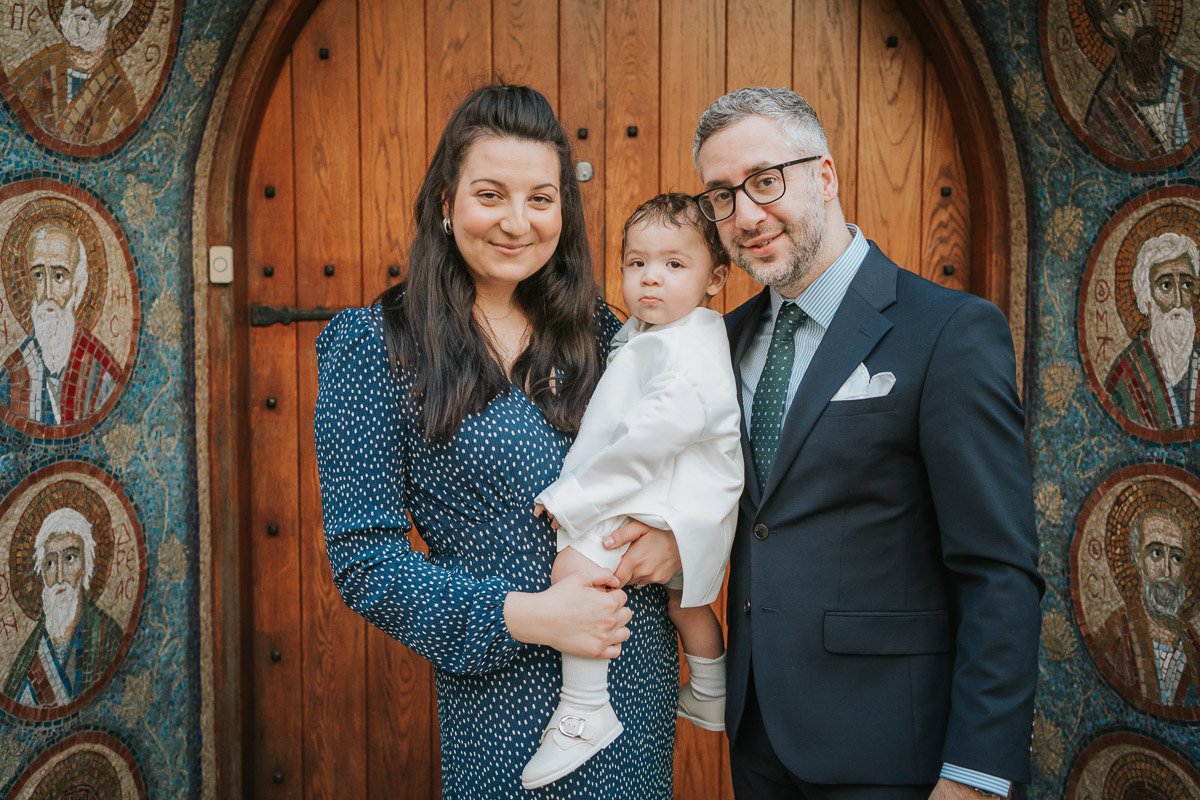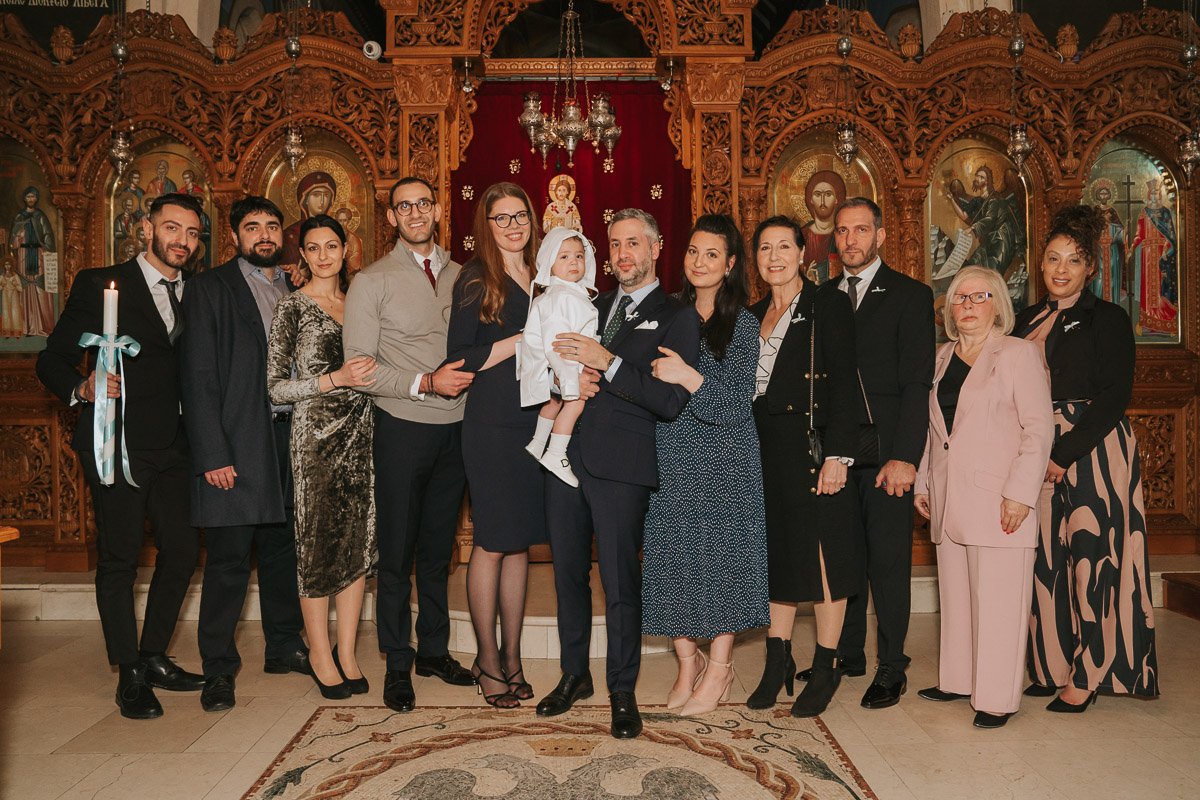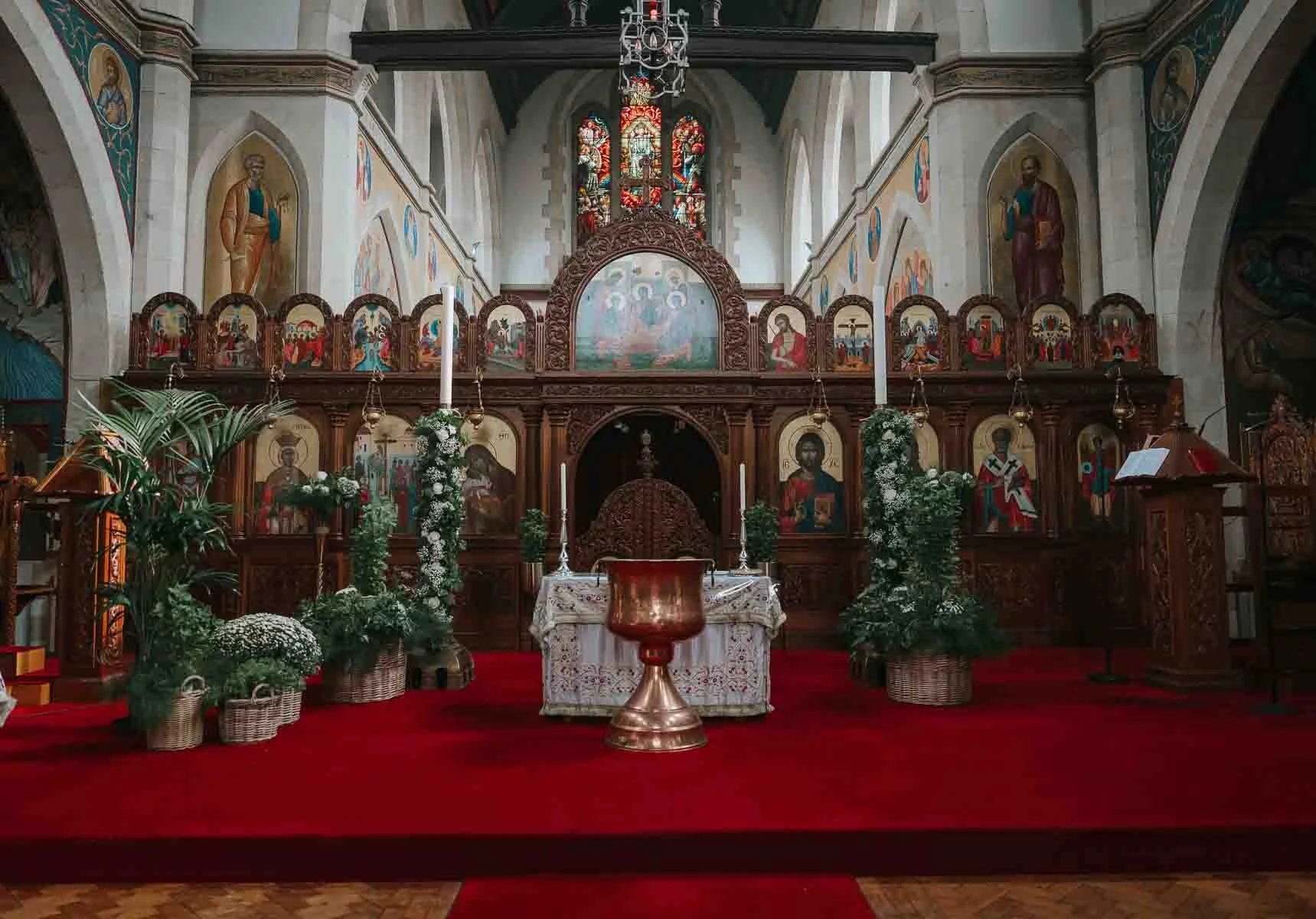Nine Steps to a Greek Orthodox Christening | Christine Constantine Photograph
GREEK CHRISTENING TRADITIONS
A Greek Christening is a very important part of a baby’s introduction into the spiritual world. As a Christening photographer, I shot many Greek Orthodox Christenings before I began to understand the symbolism of each and every tradition, so I put together this blog to make things easier for you to understand by going through some of the traditions and the meanings behind them.
An Orthodox Christening is essentially two elements. Baptism and Chrismation. Baptism is the immersion into the Holy water by the priest and Chrismation follows the baptism whereby the child is anointed with holy oil. This is made up of olive oil and sweet smelling ingredients. The priest anoints the child by placing the oil on several parts of the body - the head, chest and feet. The child is now a Christian and a part of God’s people.
Below is a list of all components of the day as they occur chronologically:
The Exorcisms
The prayer is followed by three Exorcisms and yet another prayer, the prayer of acceptance. After the Priest, summing up, asks God to drive out and banish from the baby any evil spirit which may be hiding in its heart and make him a member of the holy flock of Christ, a member of the Church, and a child and heir of God’s kingdom.
The Godparent, holding the child, is asked to face west and renounce the devil and all his works in a question and answer form (three times). He will then be asked to blow on the devil. In this case ‘west’ represents a place of darkness where the devil himself lives.
The Confession of Faith
Then the Godparent, holding the child, will face east again and affirmatively answer the Priest who will ask them (three times) if they have pledged their allegiance to Christ.
After doing so, the Godparent will recite the Creed, the Symbol of Faith (‘To Pistevo’ in Greek) which is a summary of the Orthodox teachings,
The Blessing of the Oil and Anointing
Once the priest has blessed the water in the font, the Godparent will offer a small bottle of olive oil over which a prayer for the banishment of evil is read.
The priest then pours three times in the shape of a cross, on the water in the Font, in order to render the consecration of the water complete.
The Godparents are now required to undress the baby who will then be anointed with the holy oil on the forehead, nose, ears, mouth, chest, legs, feet, hands and back. The Godparent will then anoint the child, to prepare him.
The Immersion
Now the baby will be immersed three times in the Font which represents the ‘Tomb of Christ, symbolically being ‘buried’ with Christ, then ‘raised’ with Christ.The baby is then removed from the Font and placed in the arms of the Godparent who is waiting for them with a white sheet. The truth of baptism lies in this profound action and is reflected in many of the prayers during this rite. The truth is that the candidate for baptism has chosen to die and be reborn for Christ. The newly baptized child is now a citizen of the Kingdom of Heaven.
The Chrismation
Holy Chrismation is the seal of the gift of the Holy Spirit which marks all baptized persons with a seal that sets them apart as possessions of Christ. The Holy Spirit thus embraces them and protects them like a shield to enable them to live the faith into which they have just been baptized. This is why Chrismation is also known as the Sacrament of the Holy Spirit. In fact the priest will recite "The seal of the gift of the Holy Ghost" (in Greek: Σφραγὶς δωρεᾶς Πνεύματος Ἁγίου) everytime he makes the sign of the cross on the baby with the oil. He makes the signs of the cross in the same parts of the body as the anointing prior to the baptism.
The sacrament of Chrismation is an extension of the day of Pentecost, when the Holy Ghost was poured out on the Apostles. It is by Chrismation that a person becomes part of the people of God.
The Tonsure
Tonsure is the practice of cutting or shaving some or all of the hair on the head as a symbol of religious devotion or humility. After the Baptism and Chrismation, the Priest will tonsure the child by cutting some of his hair crosswise to signify that Christ will be the head of the child from now on and that he will reject other allegiances.
The Vesting and Procession
The Priest now blesses the child and places a “garment of righteousness” on it. The child will then be taken by the Godparents to be dressed in fresh, clean garments and the Priest will read additional prayers.
The child the returns to the front of the church fully dressed and is prayed over with a symbolic washing away of the oil, receiving the blessing of Christ. The Priest then places a cross around the child’s neck as a sign of protection.
The Godparent, holding the infant, and followed by a child holding the baptismal candle (lambada), will then be led three times around the baptismal font. This is an act of rejoicing with the angels in heaven and with the other Christians present at the addition of one more member into the flock of Christ.
The Procession, conducted in the form of the Cross around the Font, is a joyous occasion and the Priest and Chanter sing “As many as have been baptized into Christ have put on Christ. Alleluya”.
The Readings
Bible readings follow, from the Epistle of St Paul to the Romans (6: 3-11) where Paul makes the comparison between the immersion and emersion with the Burial and Resurrection of Christ, and from the Gospel according to St. Matthew (28: 16-20) where the Divine Institution of Baptism was established. The Priest then reads the Conclusion prayers.
Holy Communion
The child is then given its first Holy Communion, its first taste of the Body and Blood of Christ. Just as a mother physically nourishes her newborn infant with milk, so too the Grace of God offers as spiritual food, Holy Communion to its newest member, just born through baptism.
For at least the next three Sundays after the Baptism, the Godparent will be expected to take the child to Church to receive further Holy Communions.
The mother of the baptized child will then be called by the Priest to make the sign of the Cross and kiss the Icon of Christ thanking Him for the great blessing of rendering her child a member of His Church. The service is now concluded and the baby and lambada is passed back to the parents. They will then be asked to kiss the hand of the Godparent as a sign of respect and gratitude for taking on the high responsibility of assisting in the spiritual development of the child throughout its life.
ALL IMAGES ARE BY: CHRISTINE CONSTANTINE PHOTOGRAPHY




